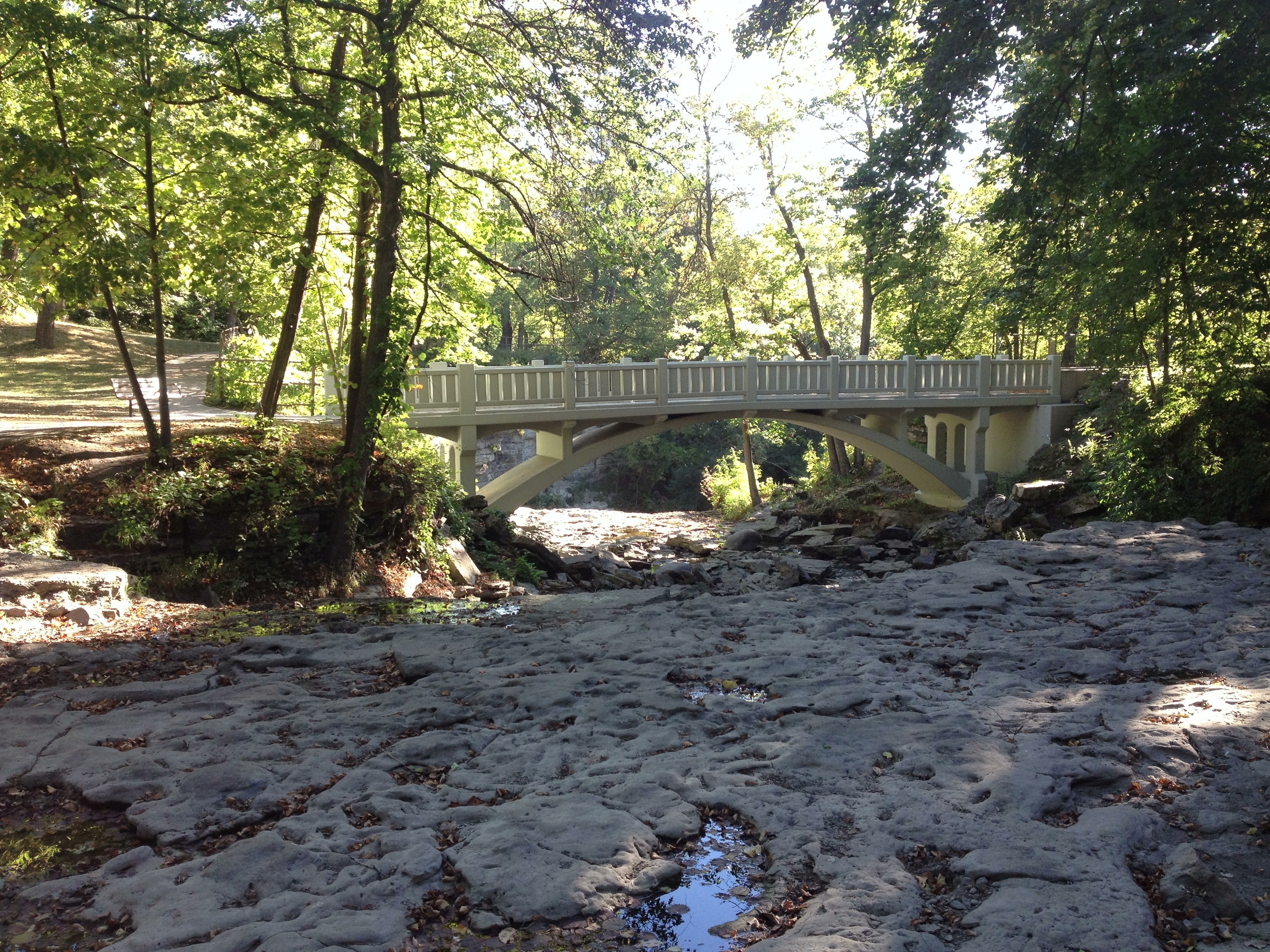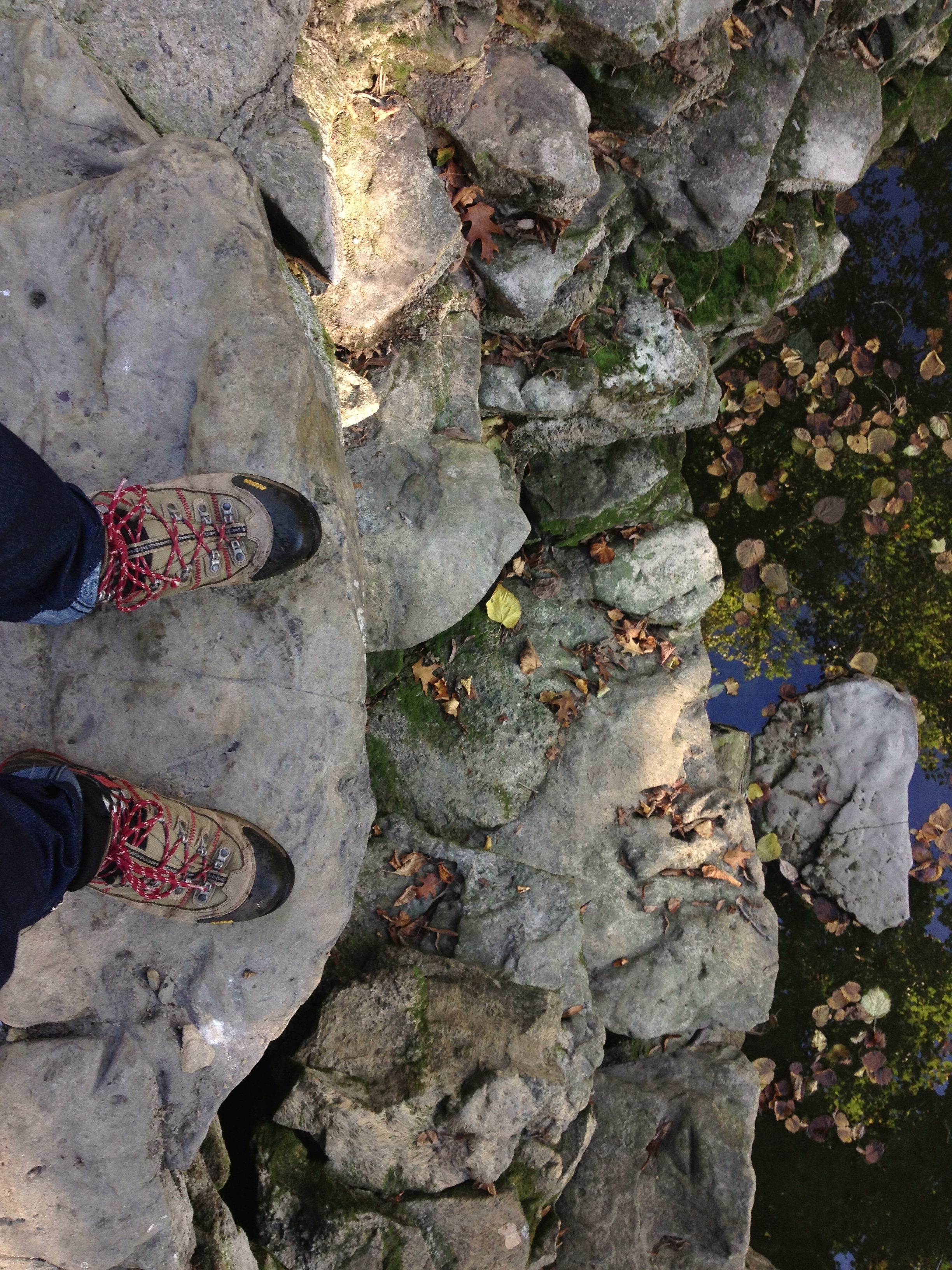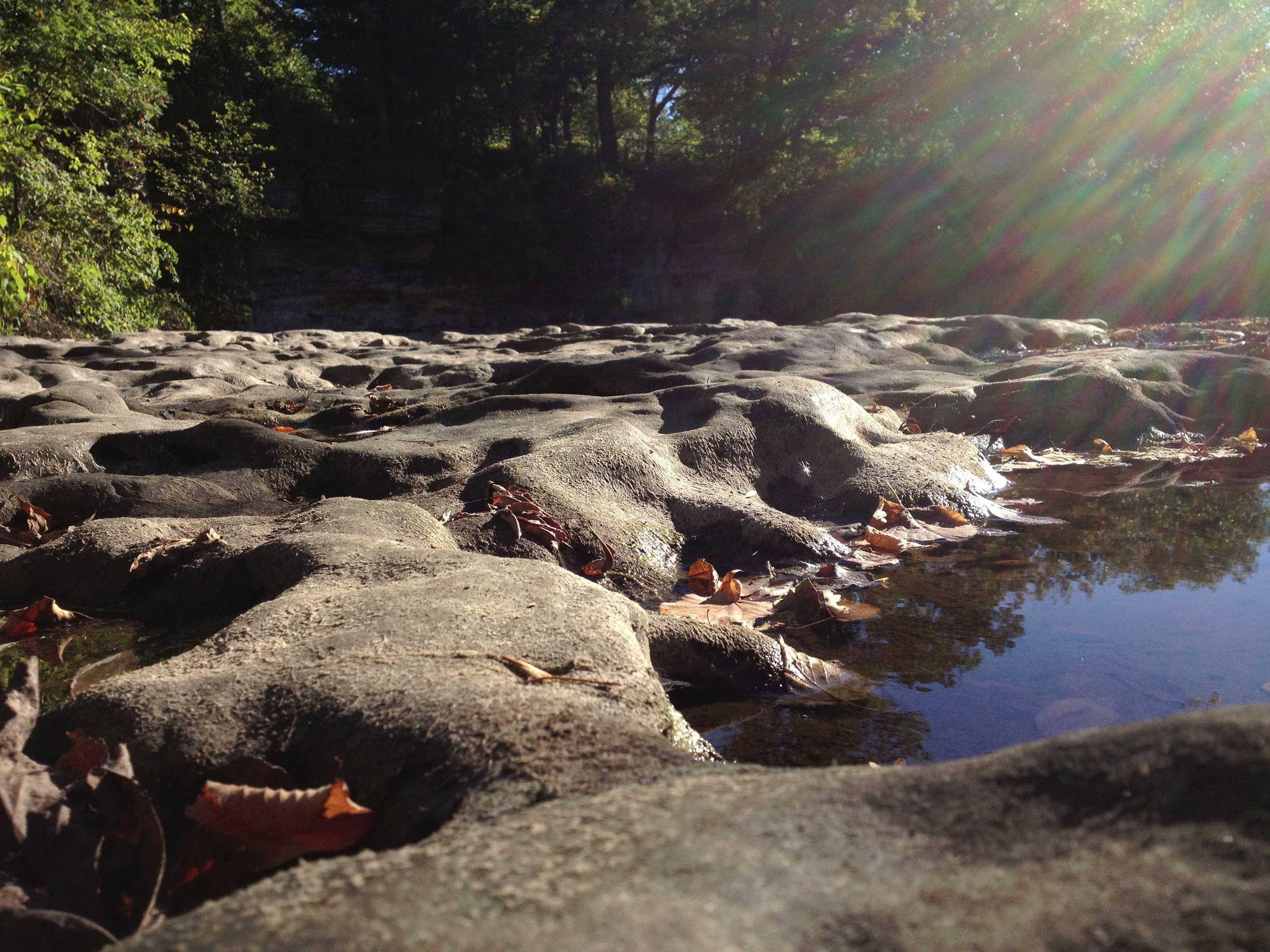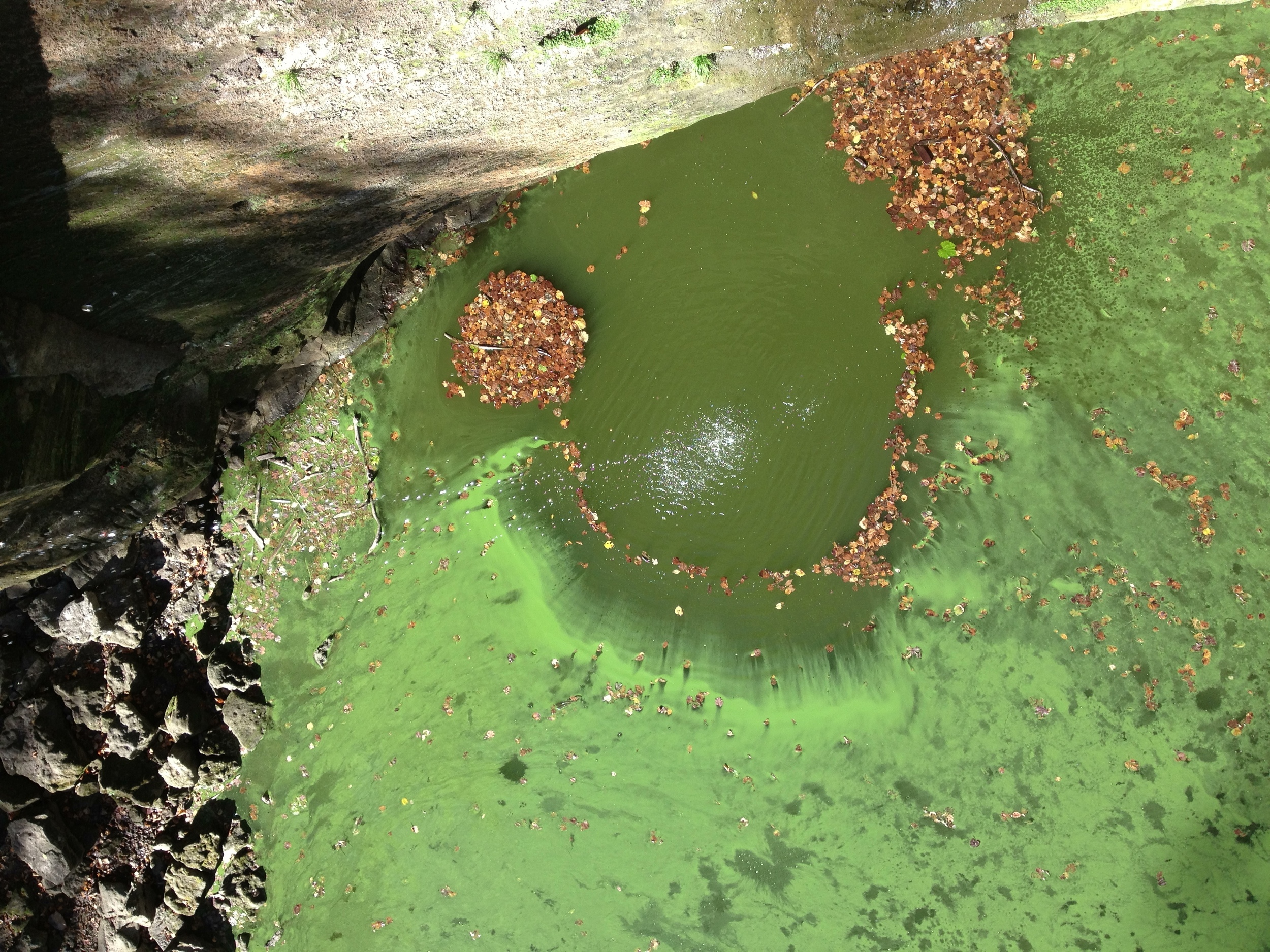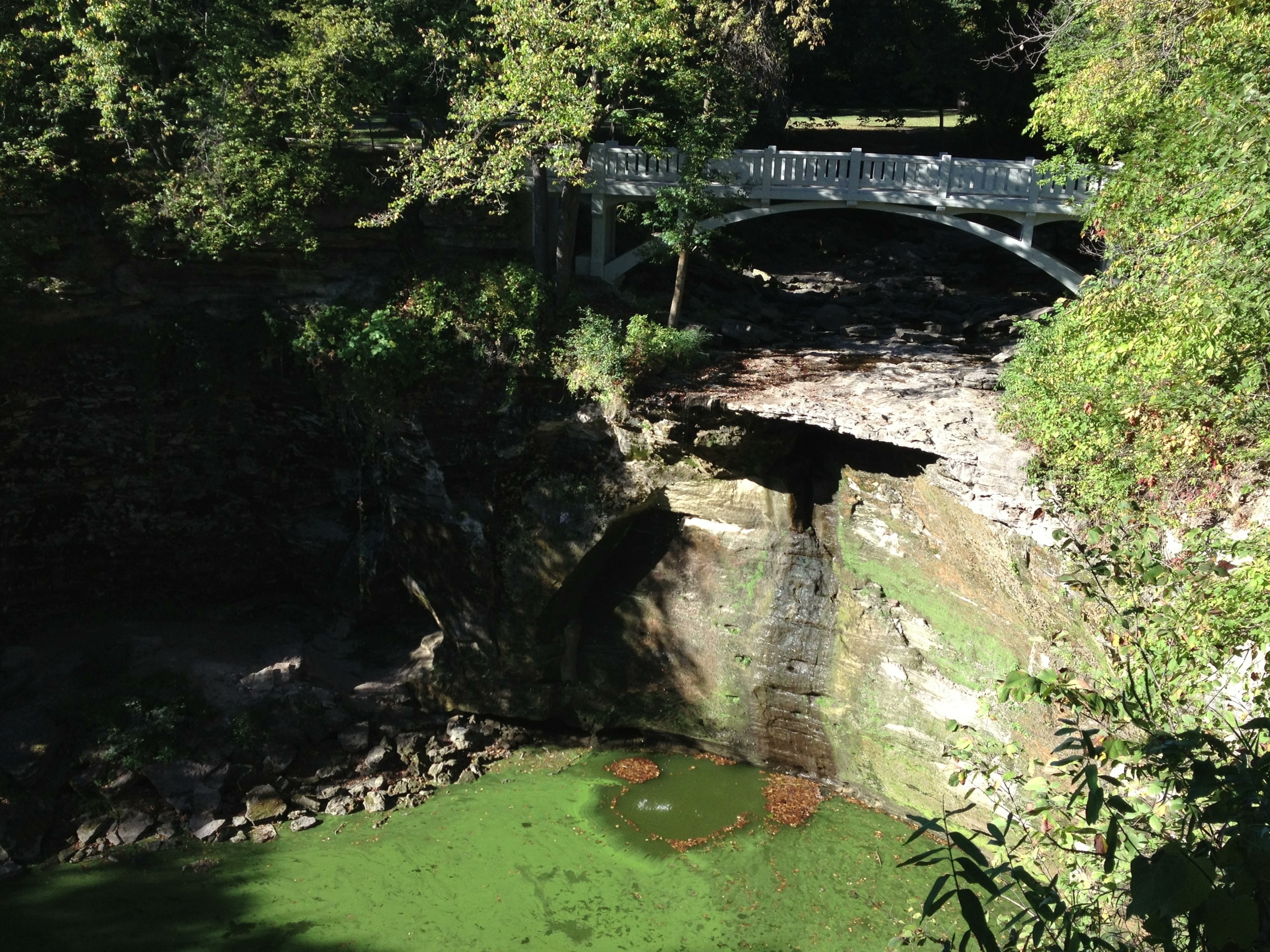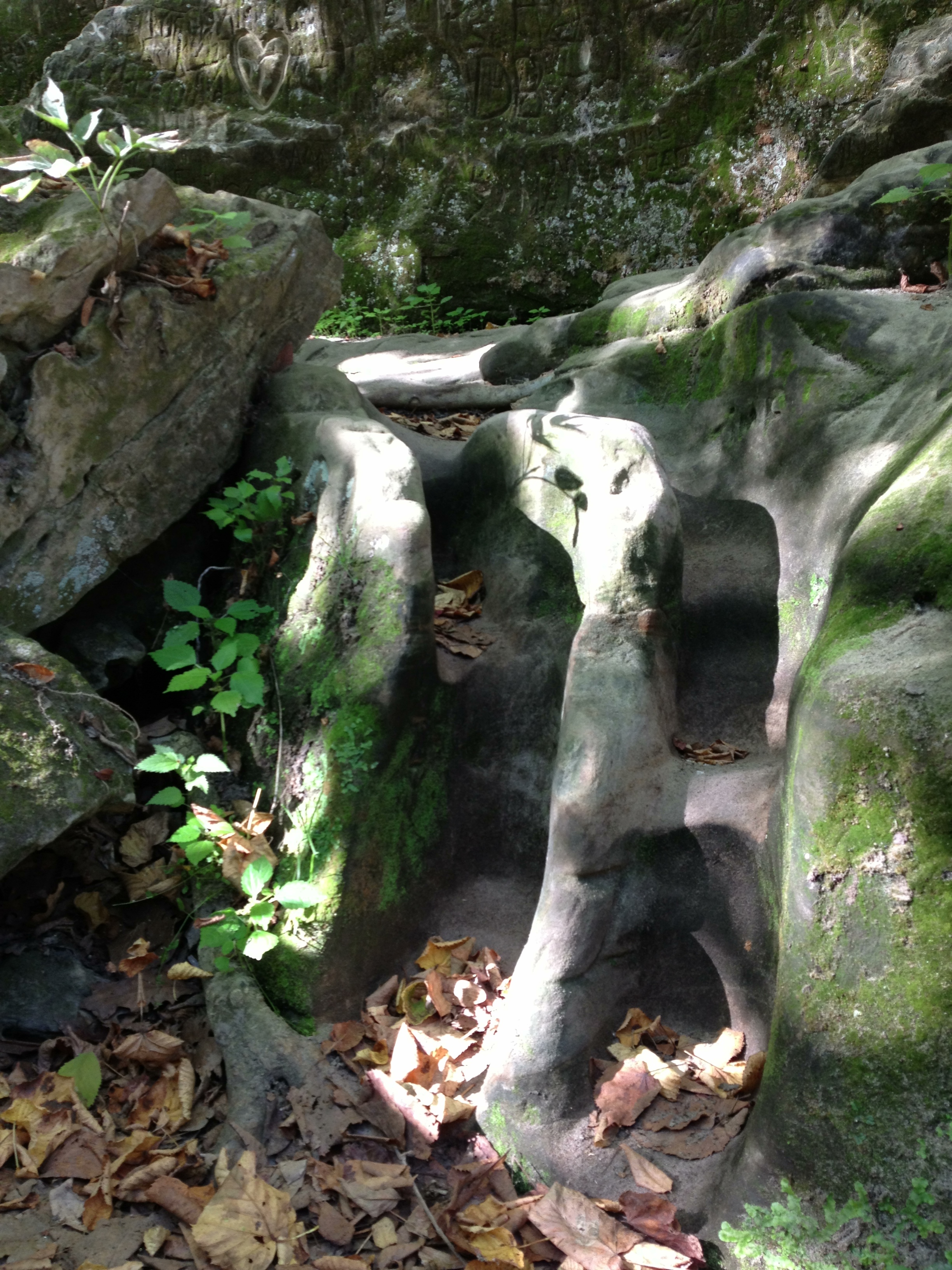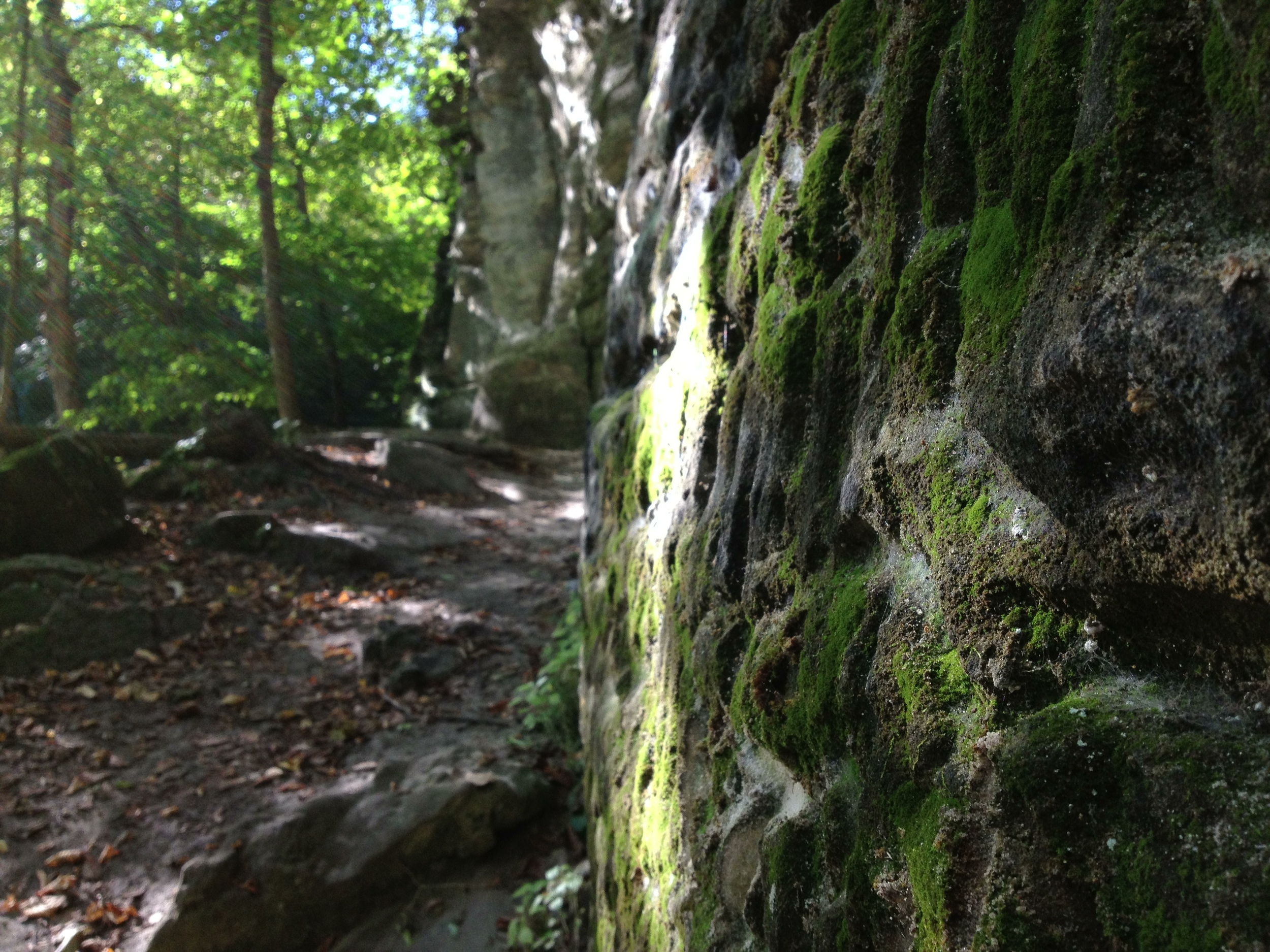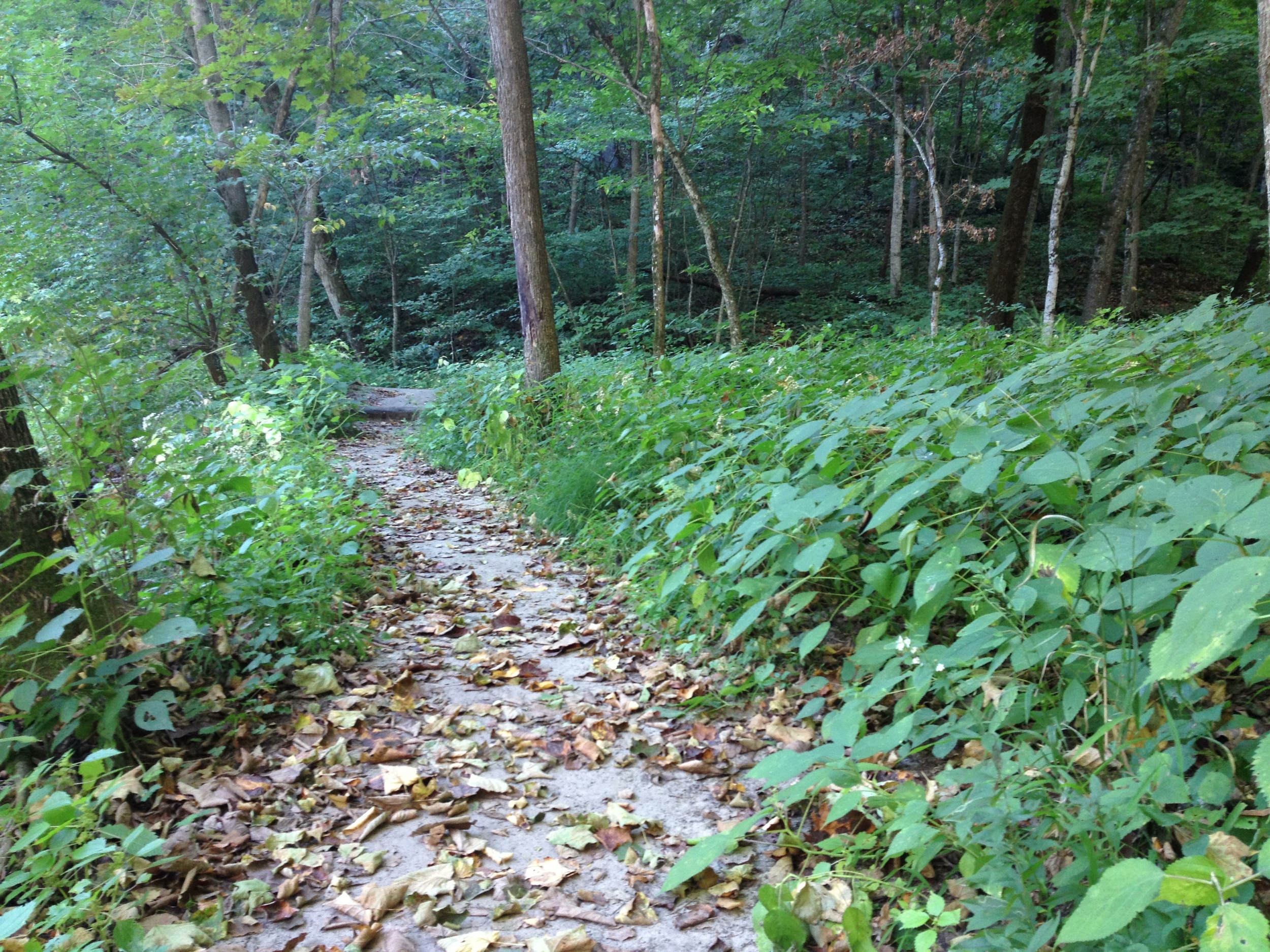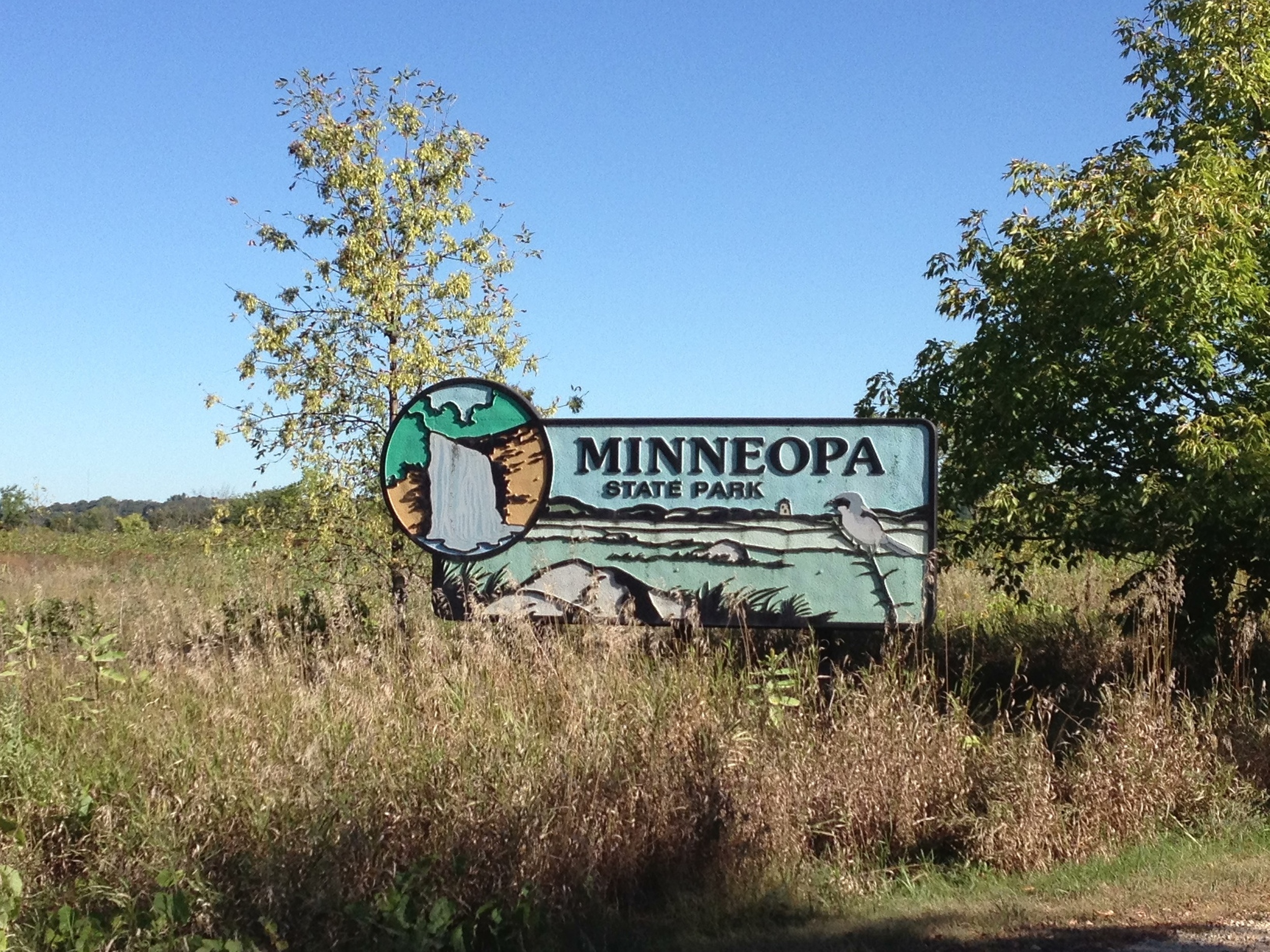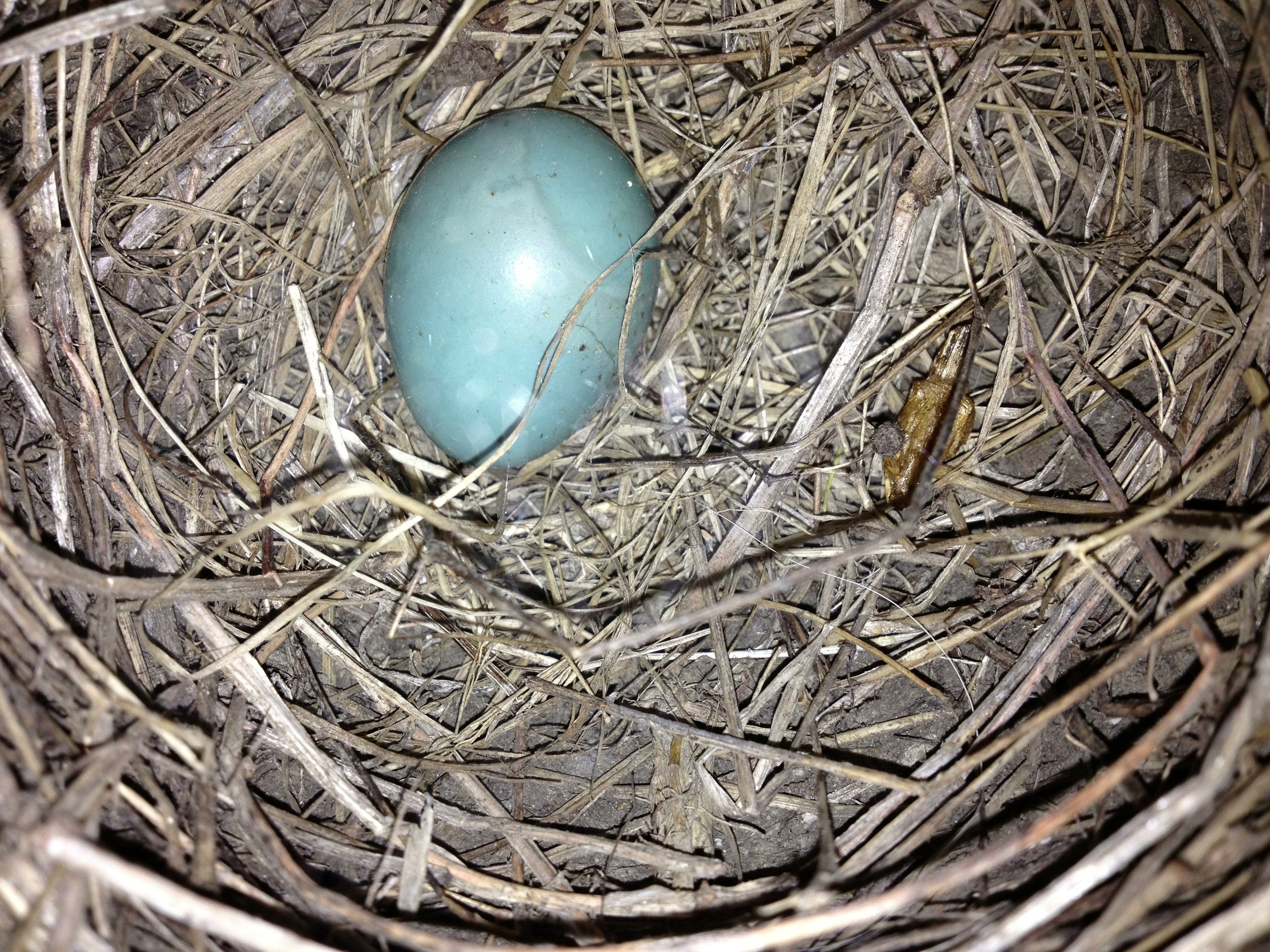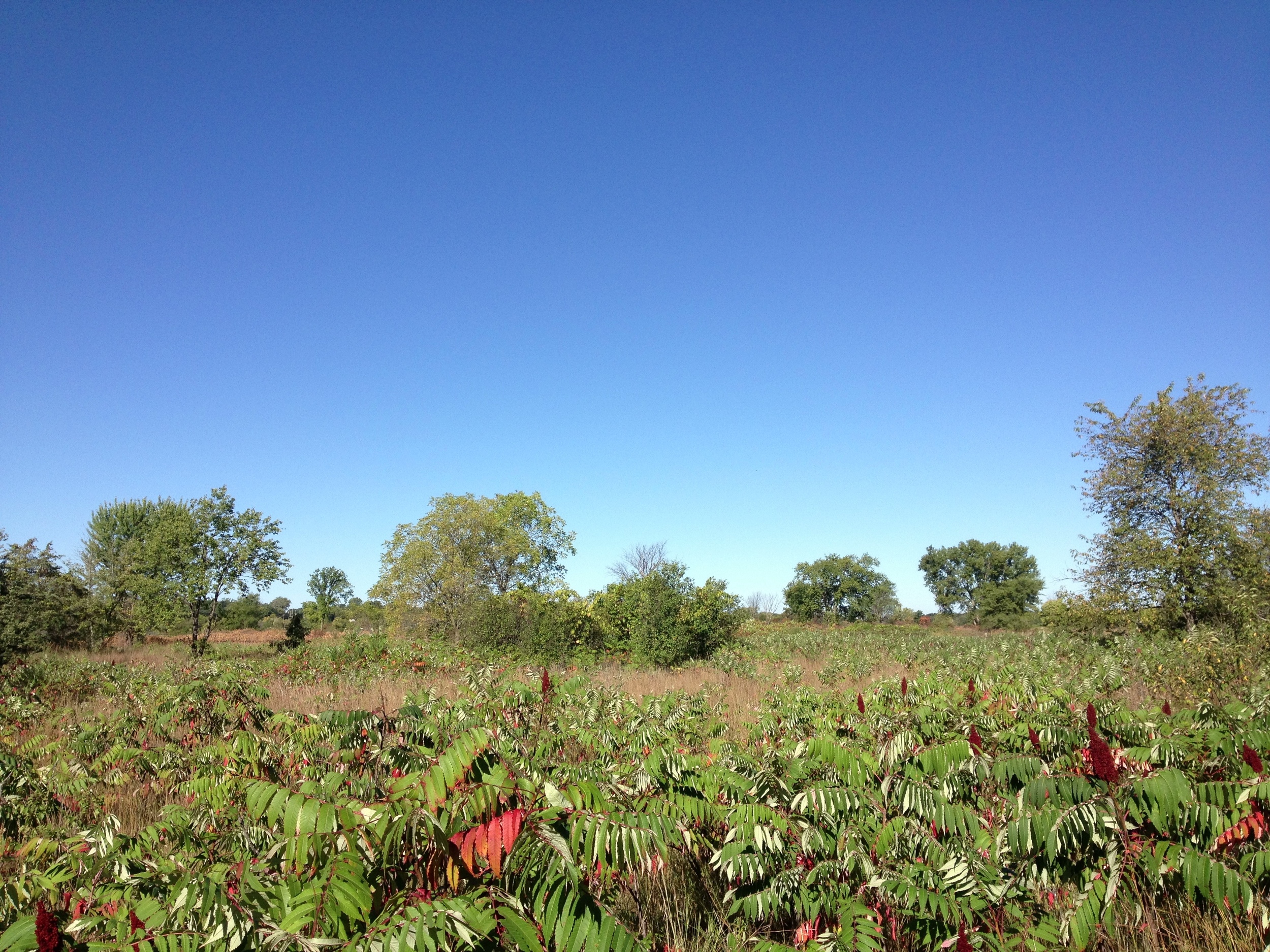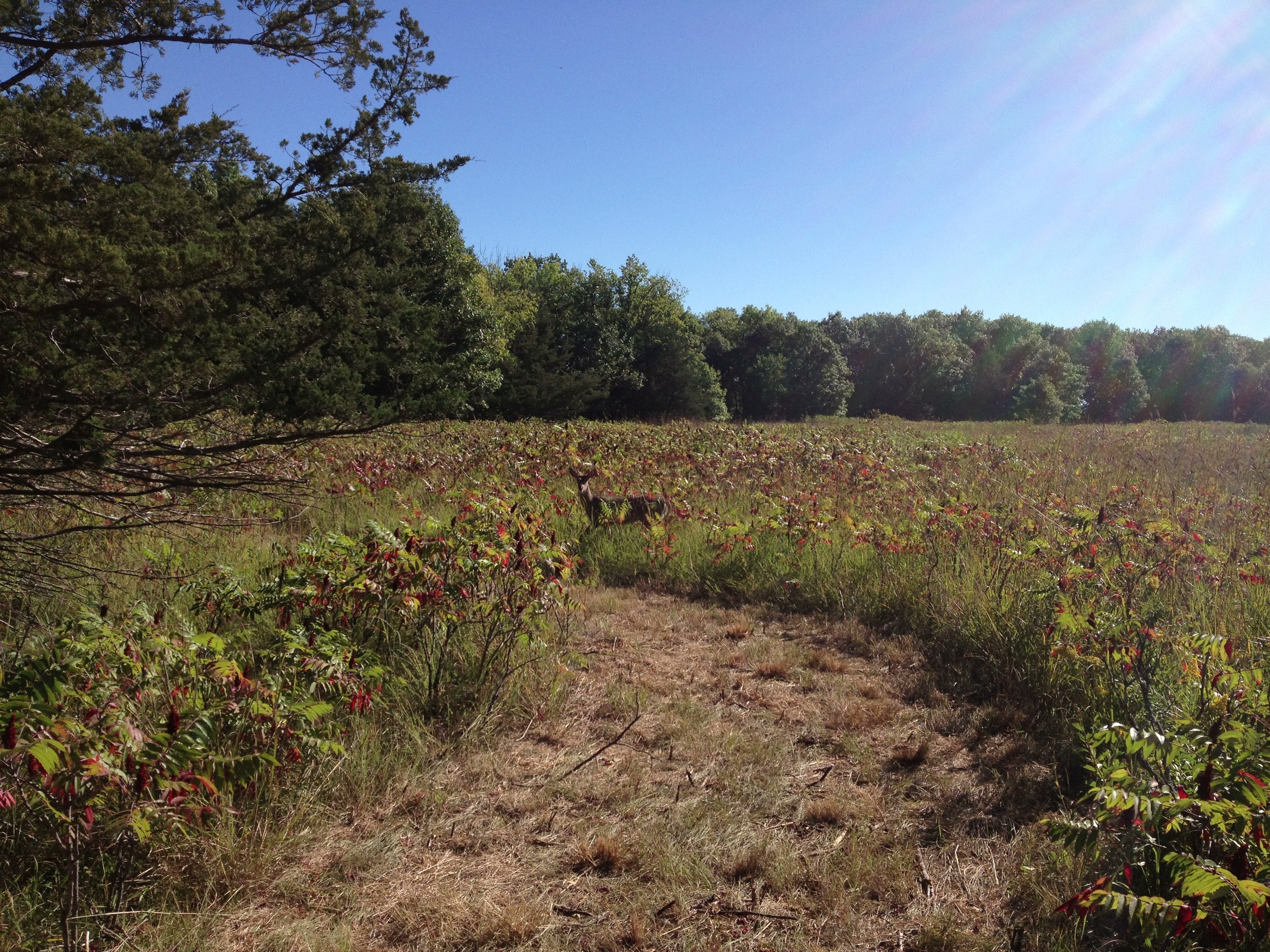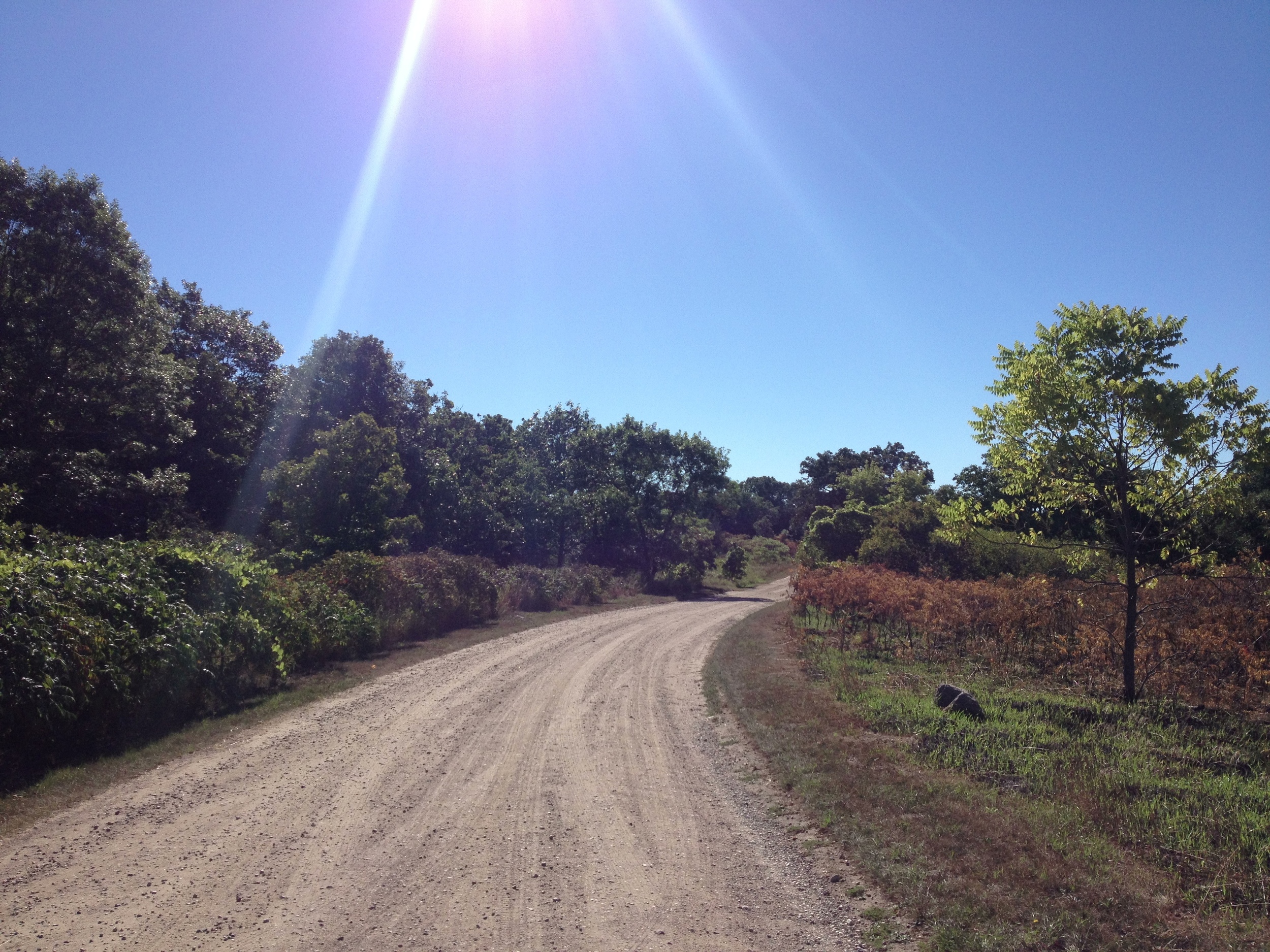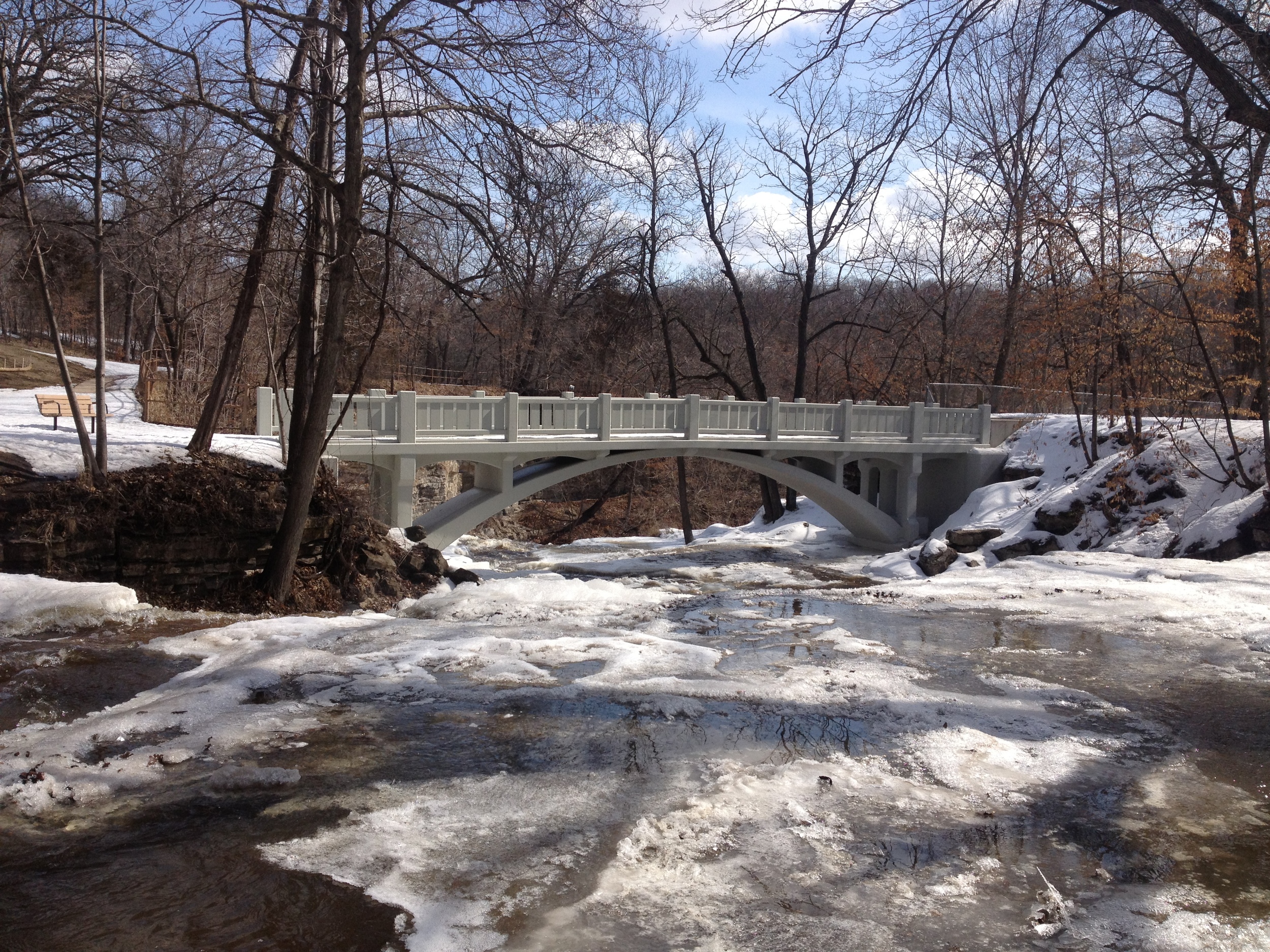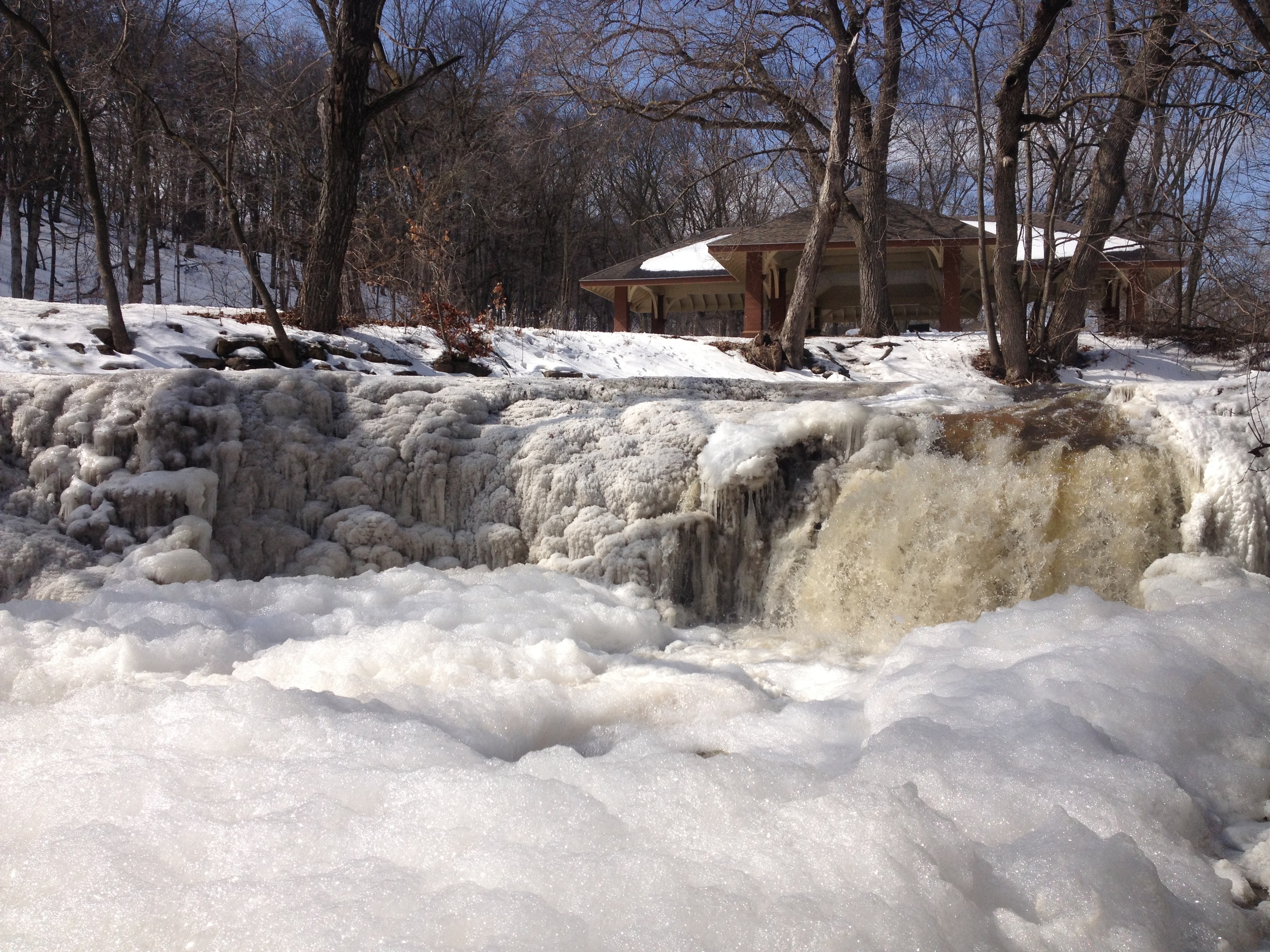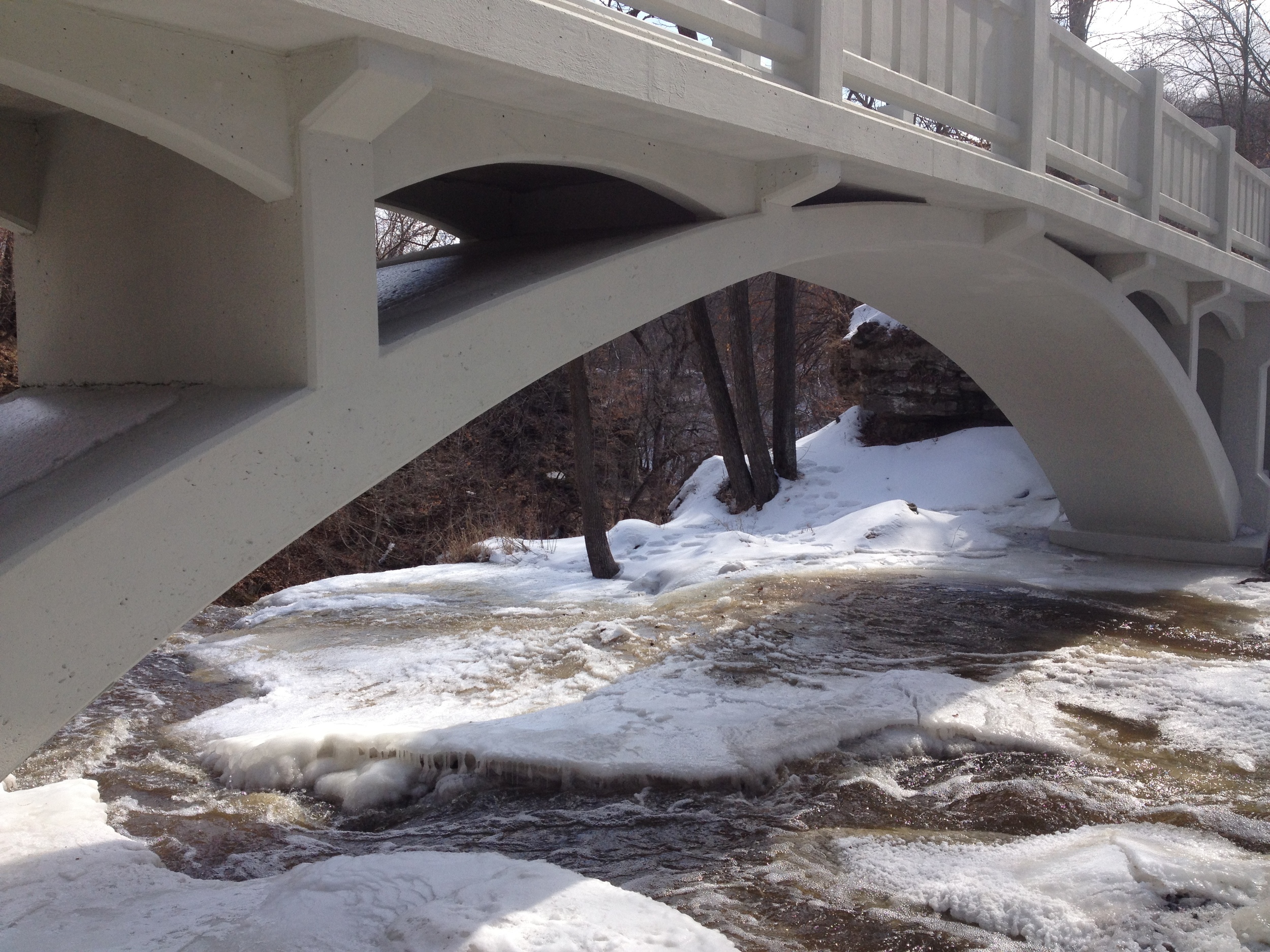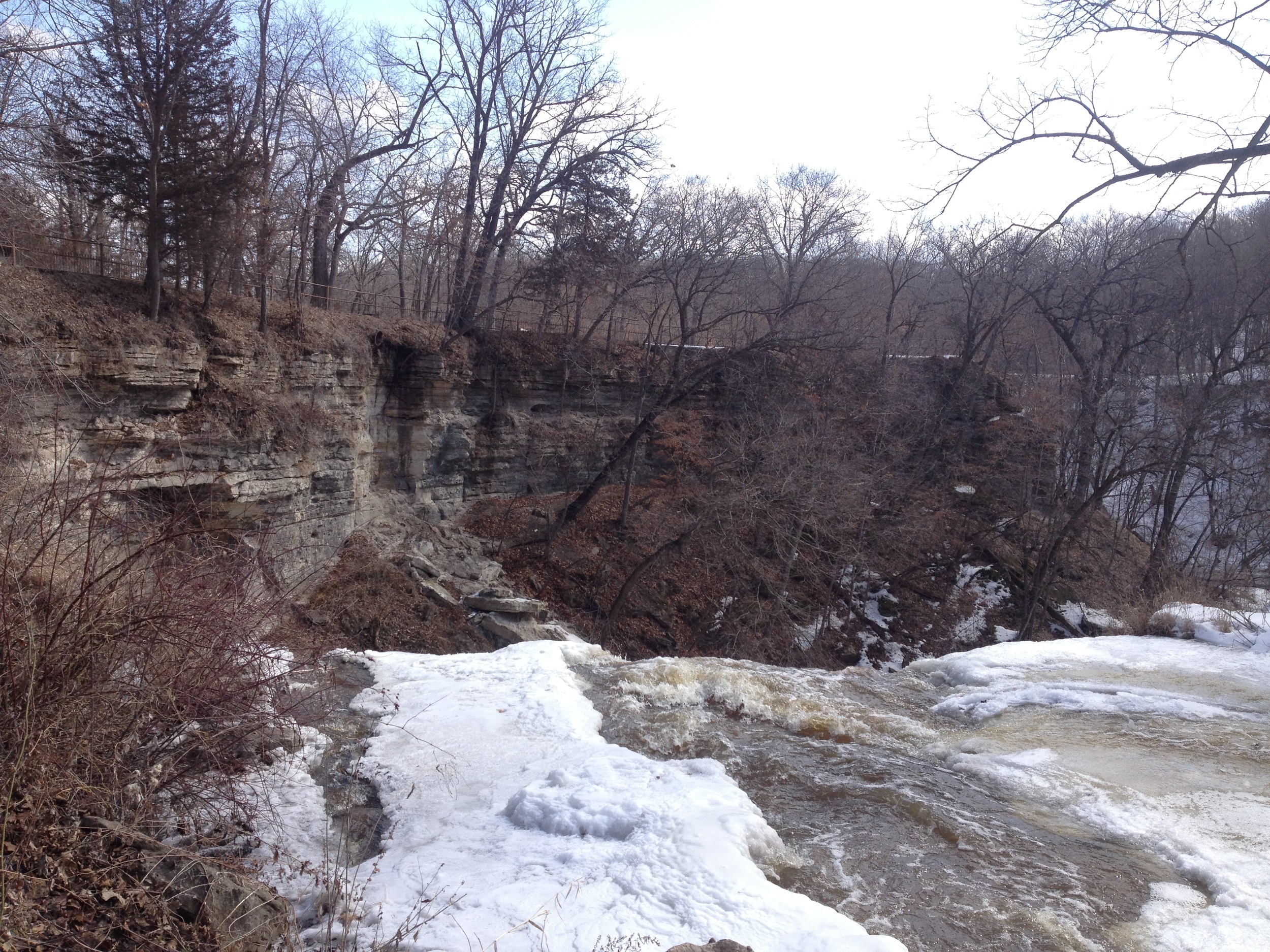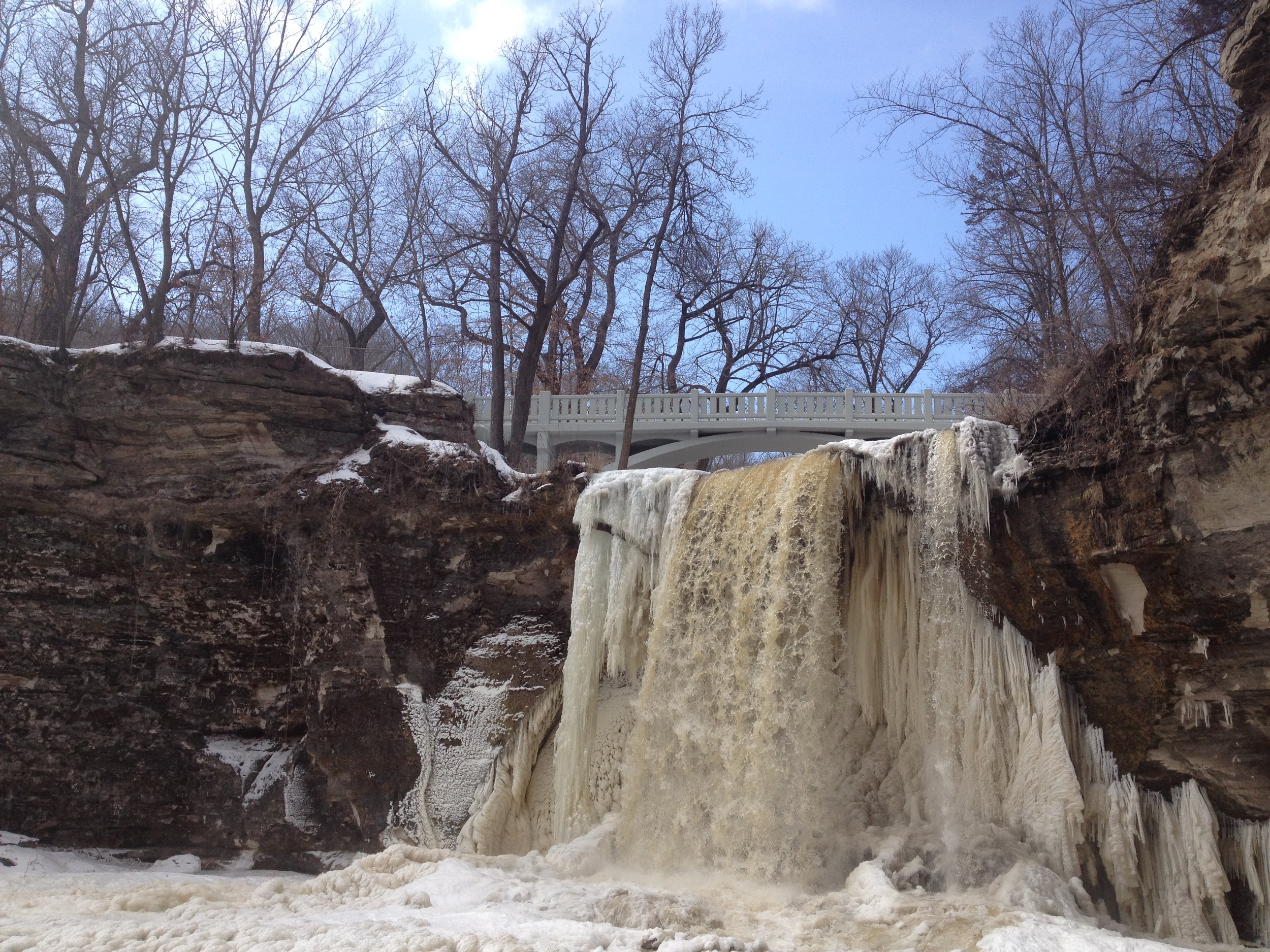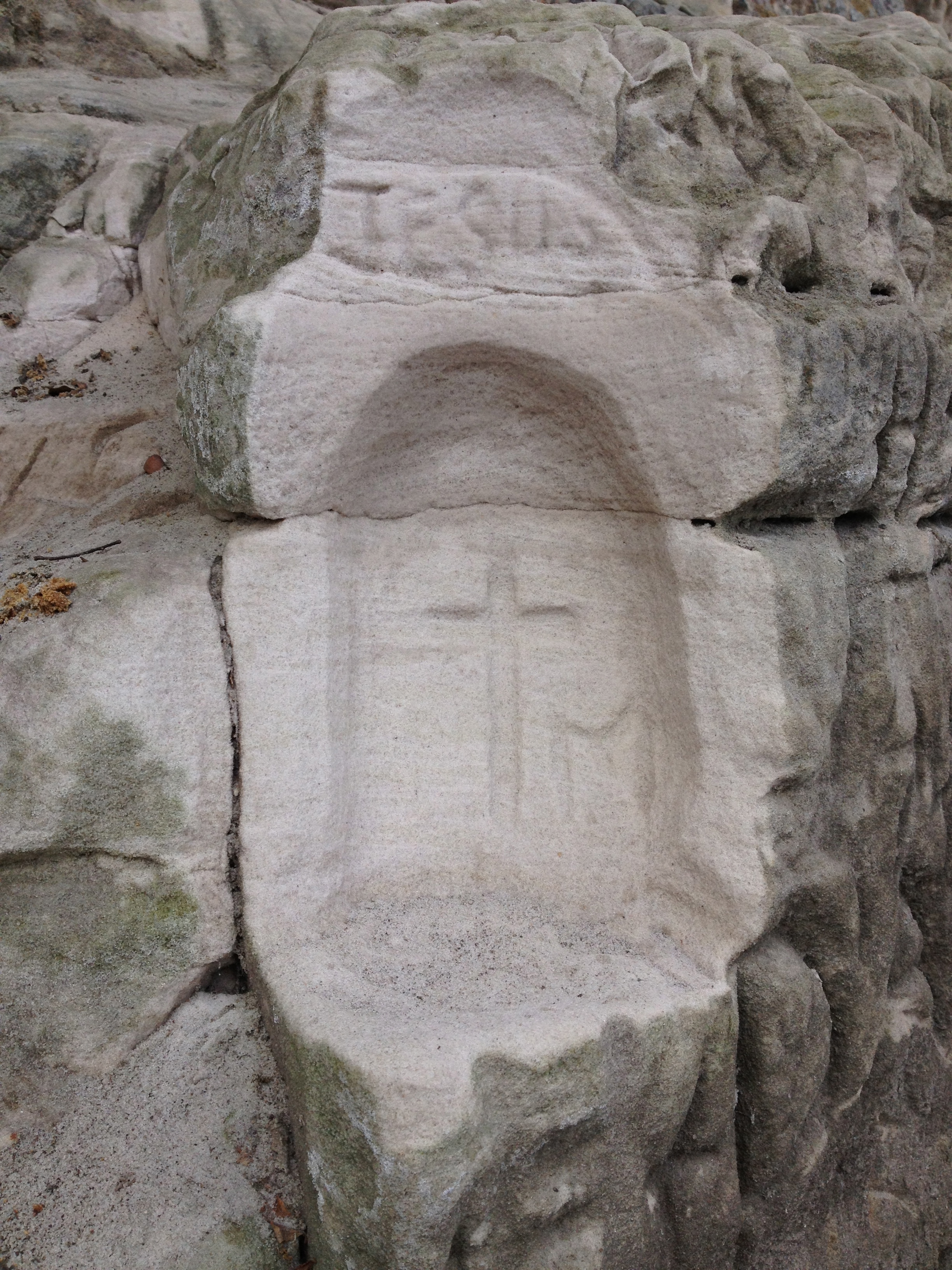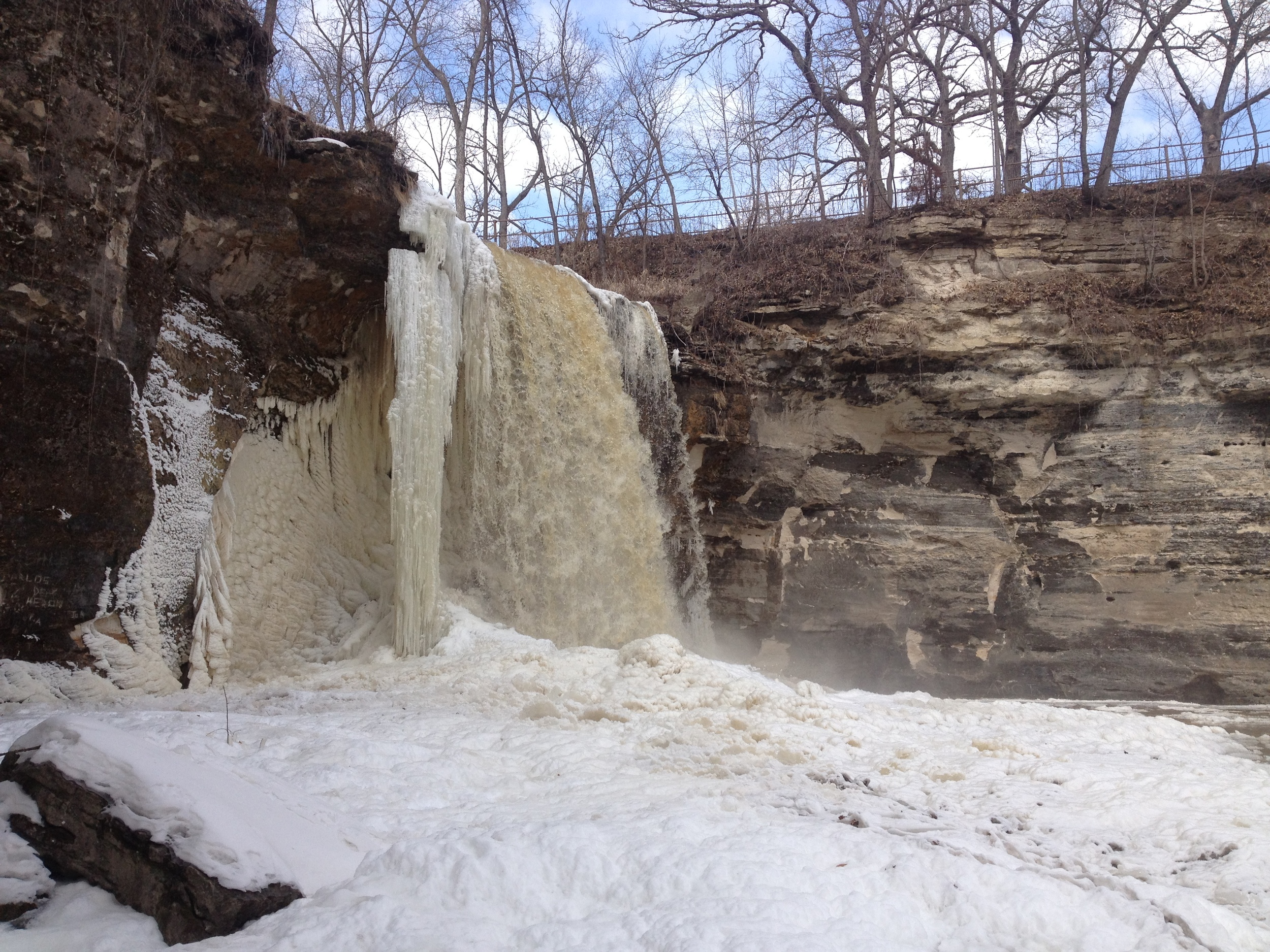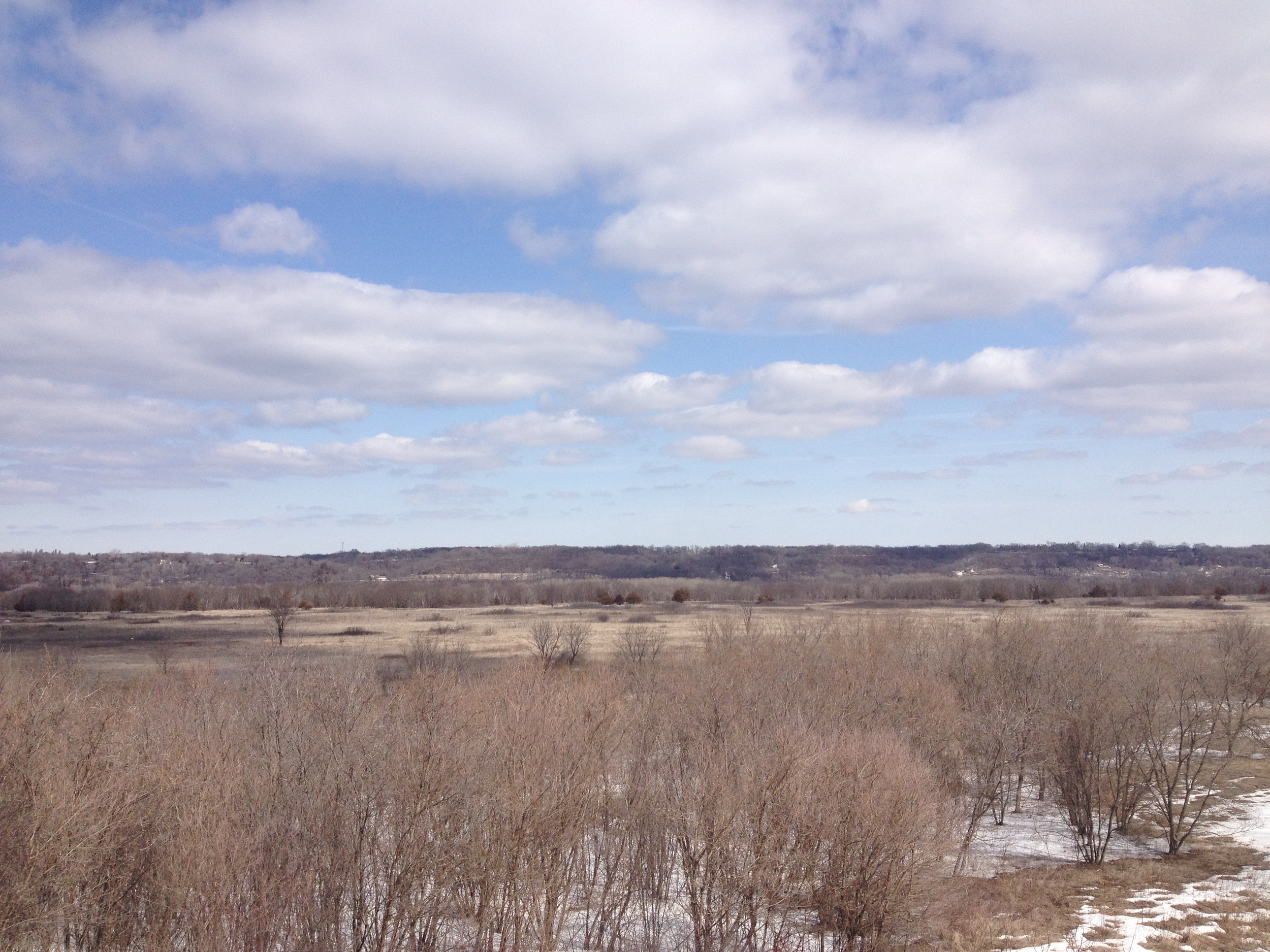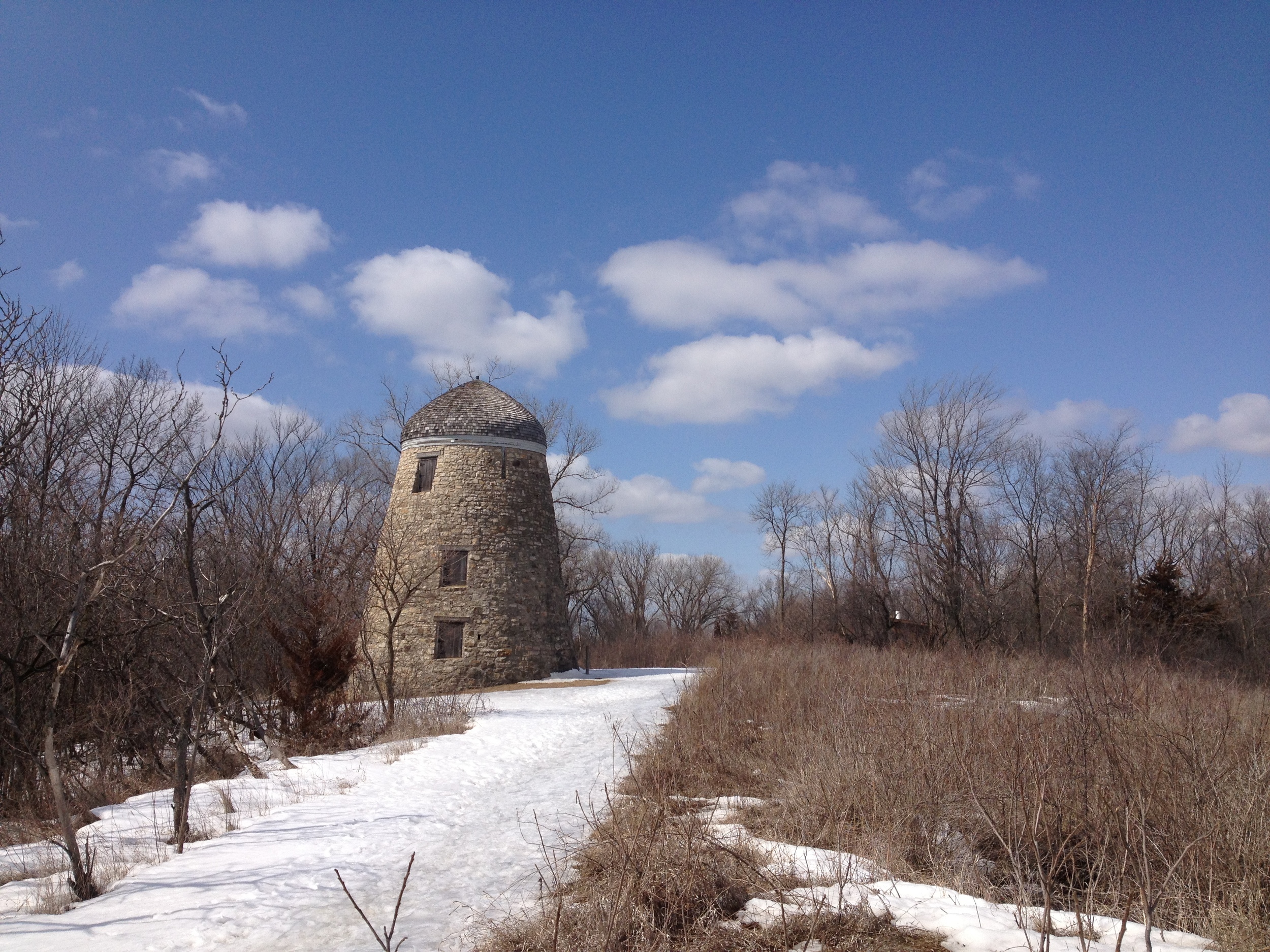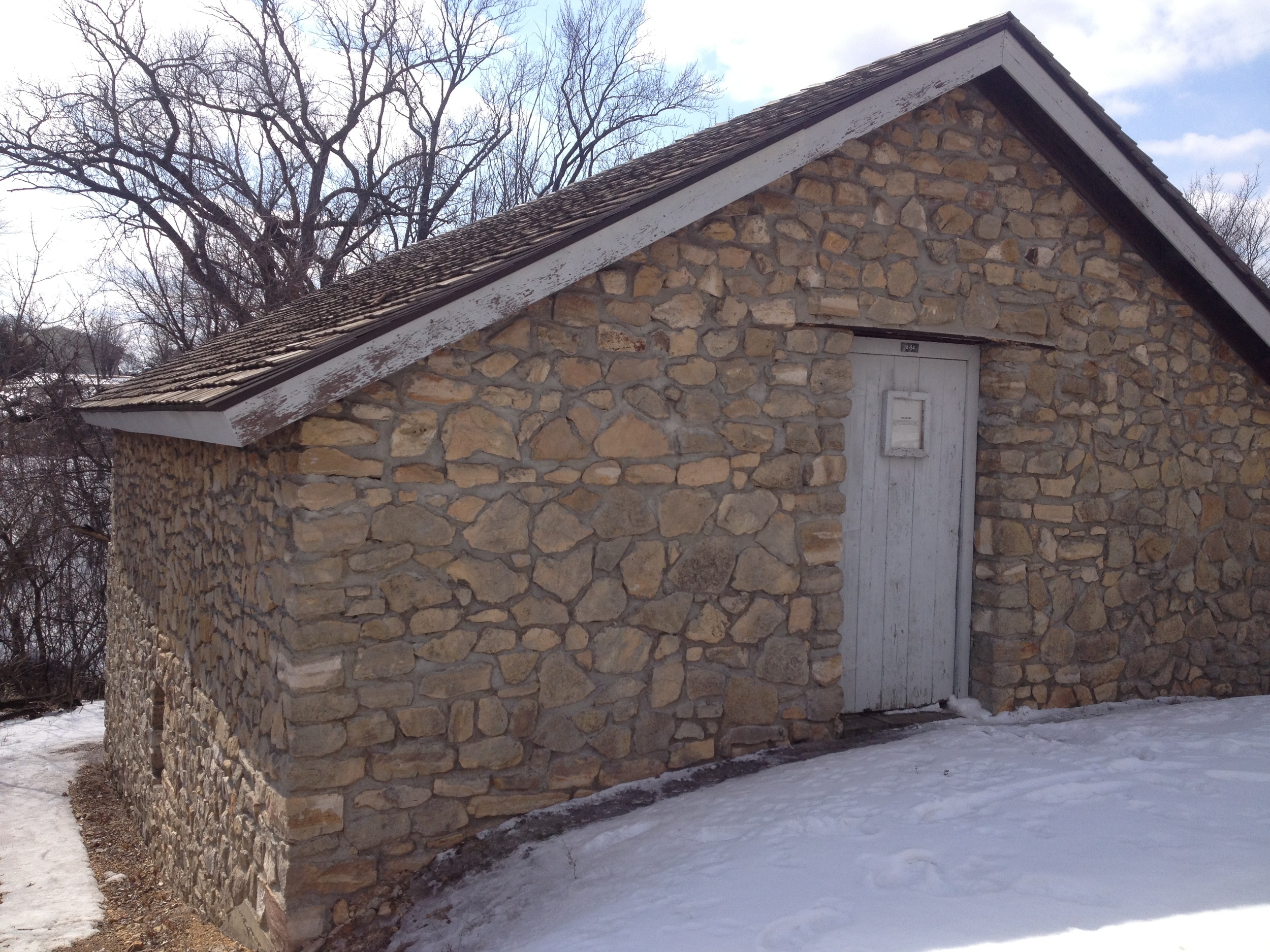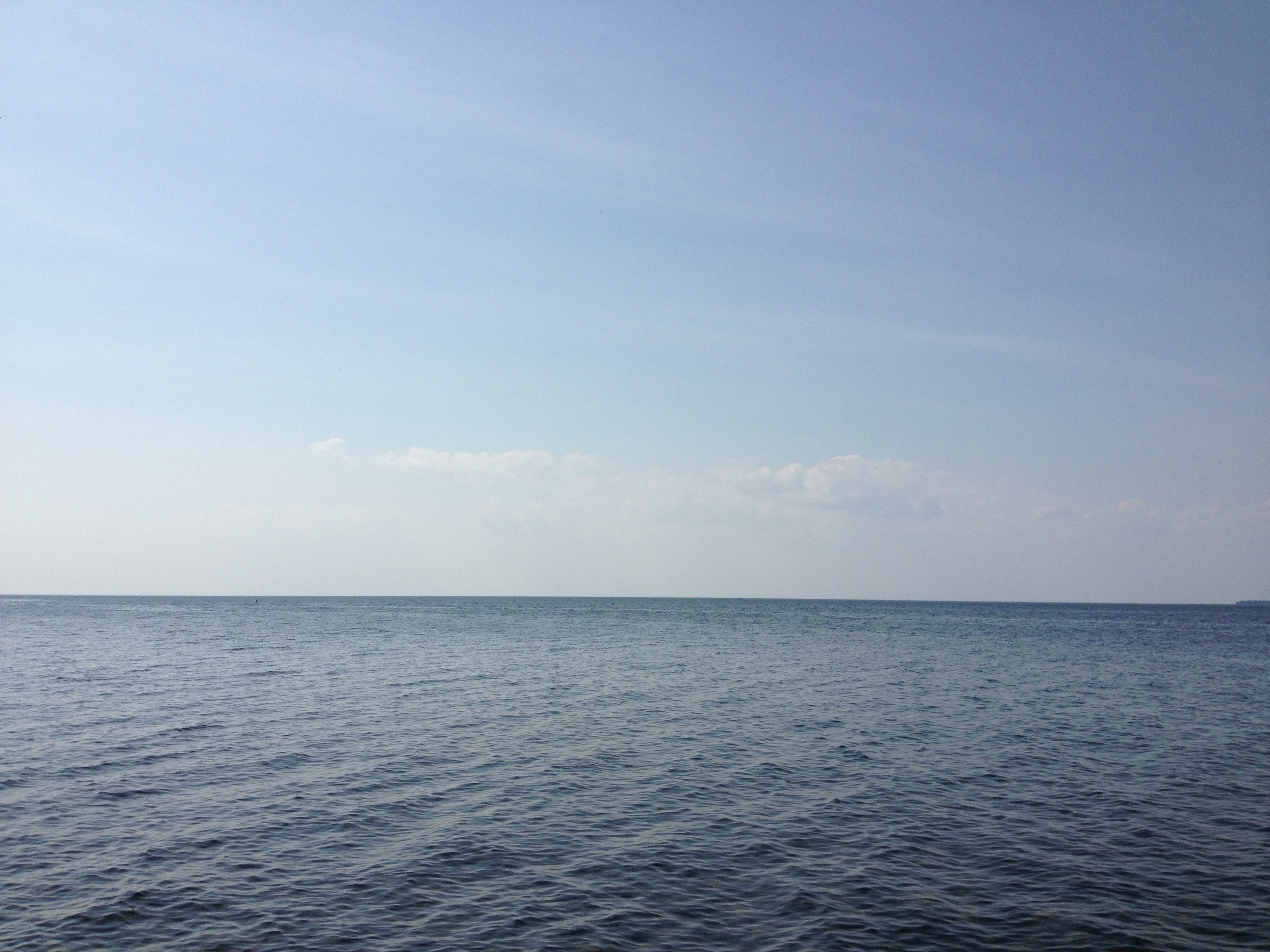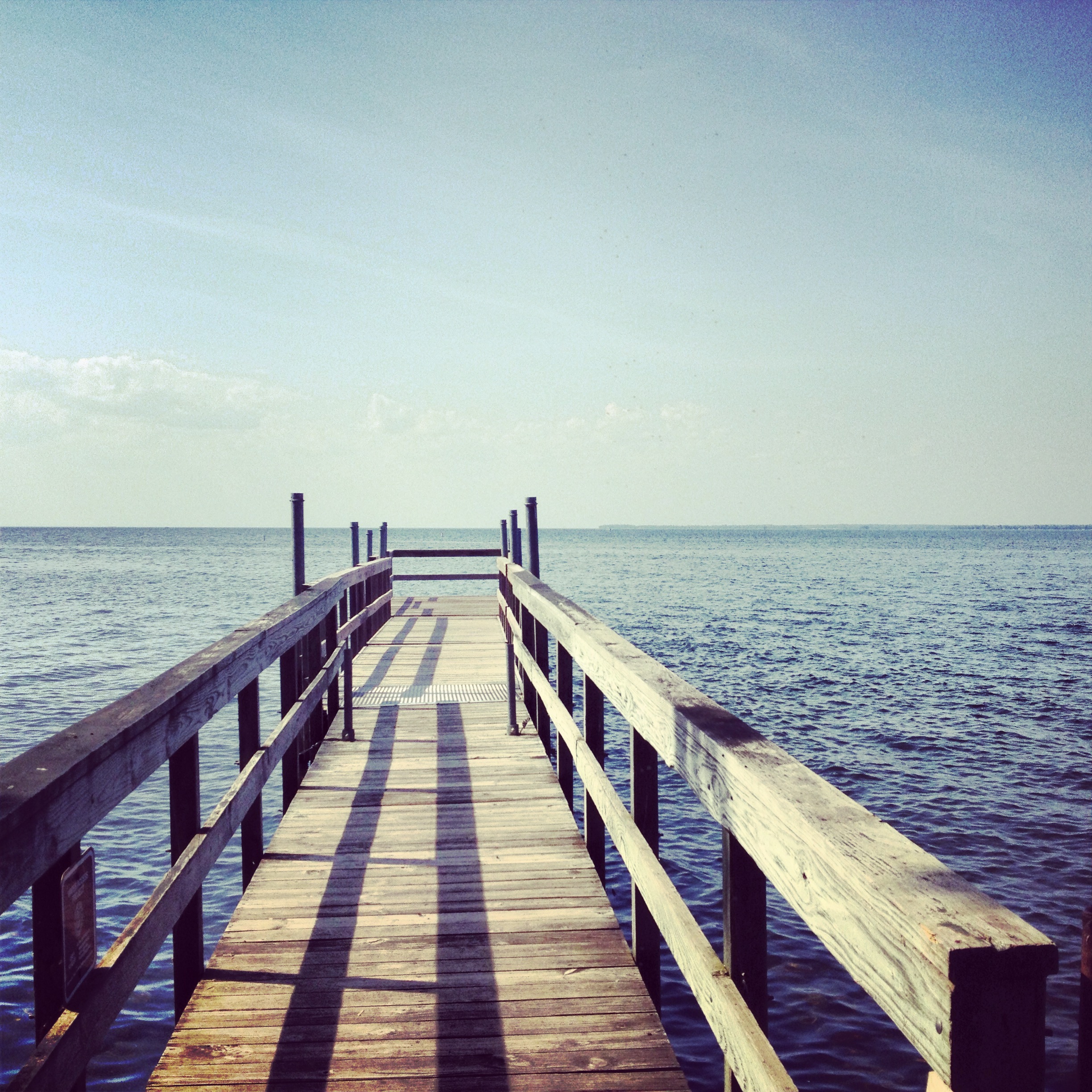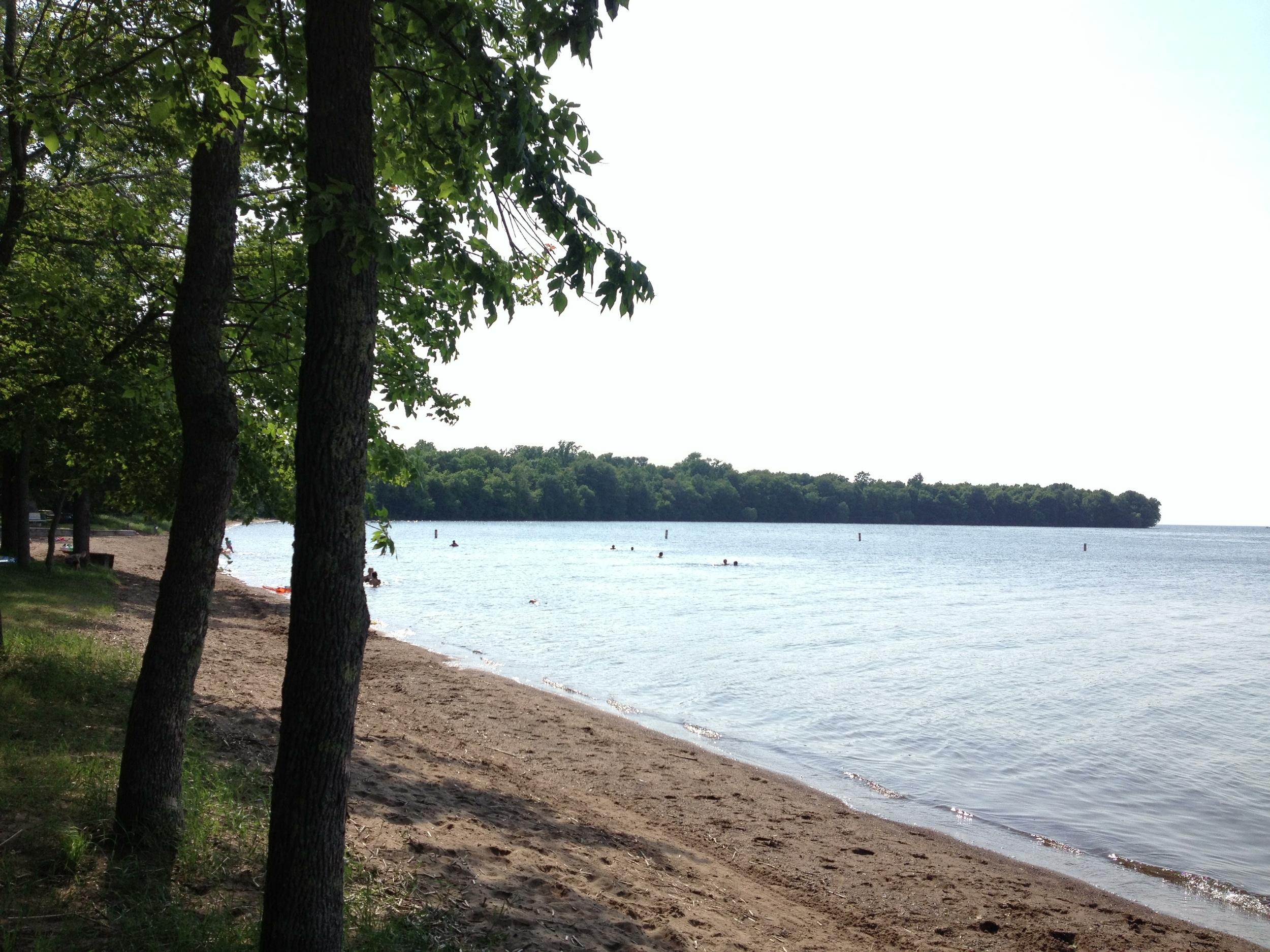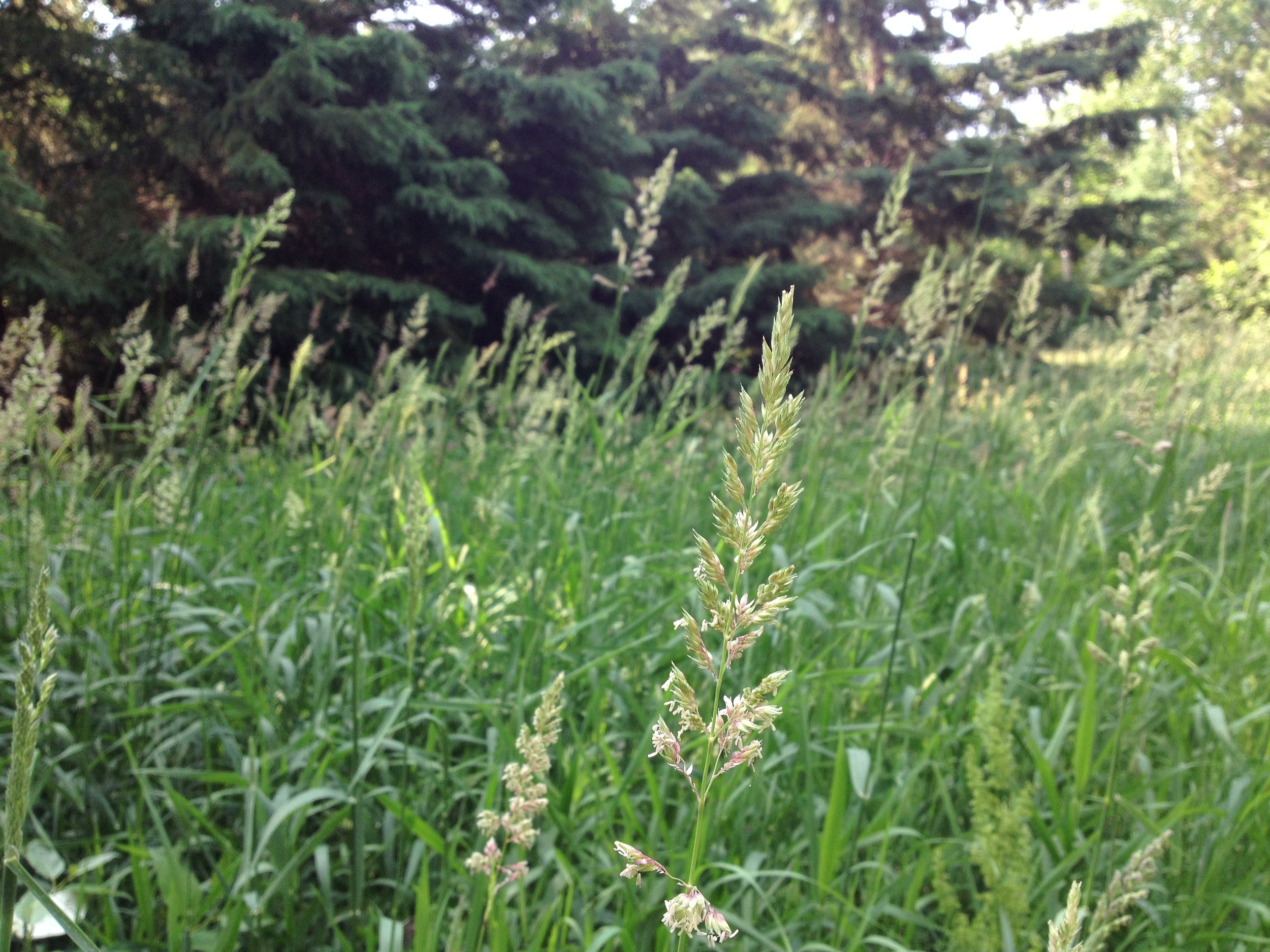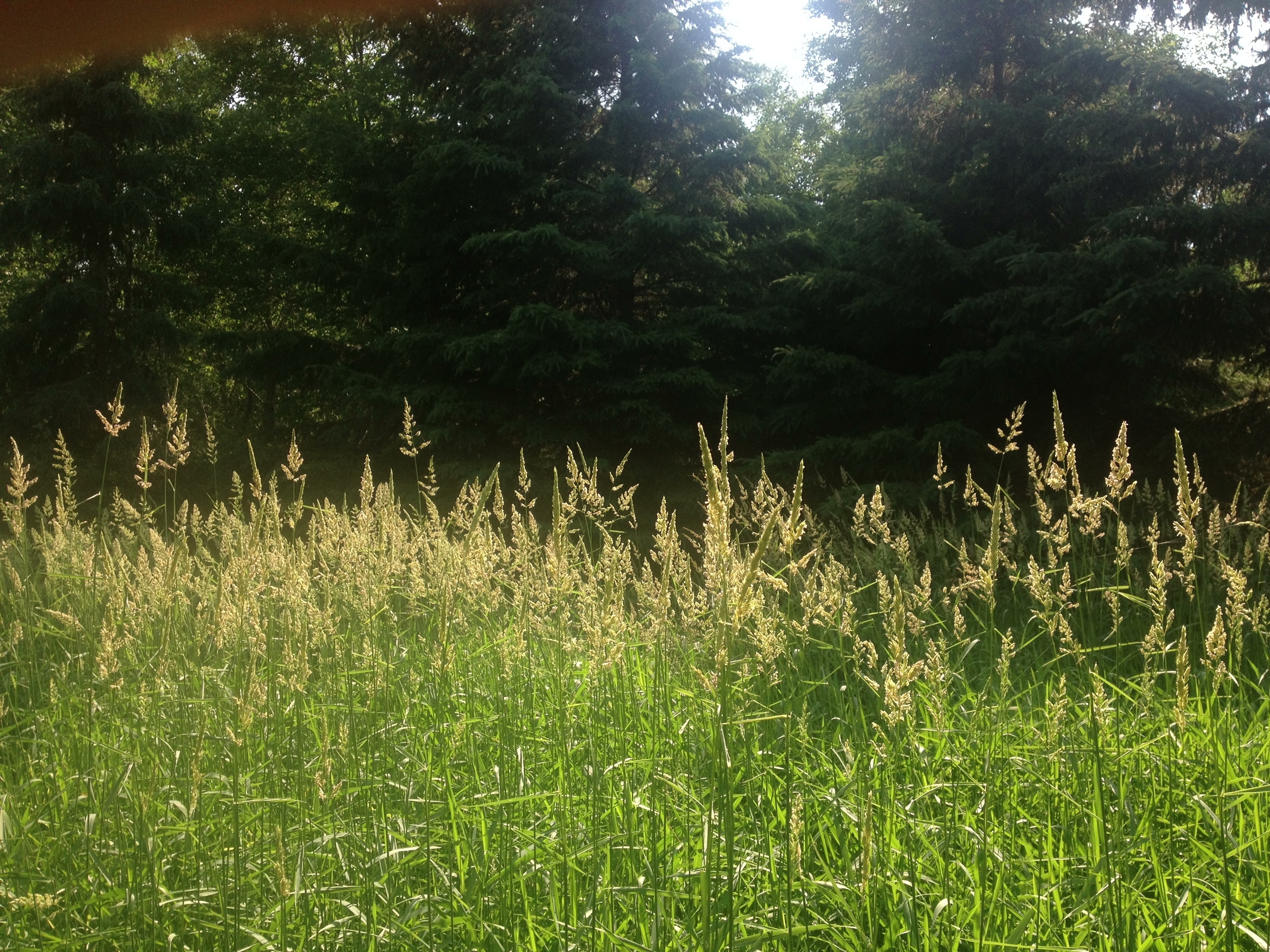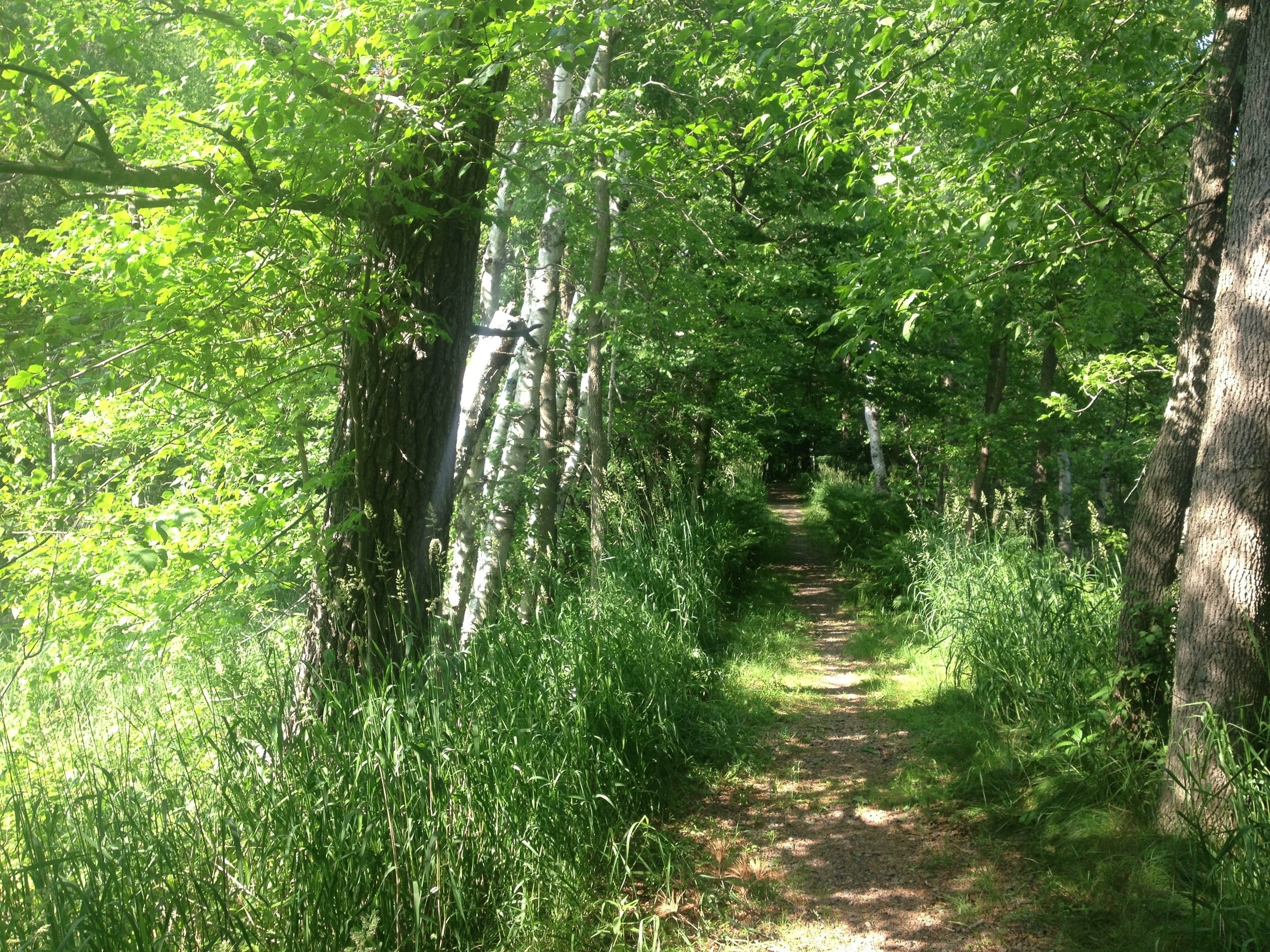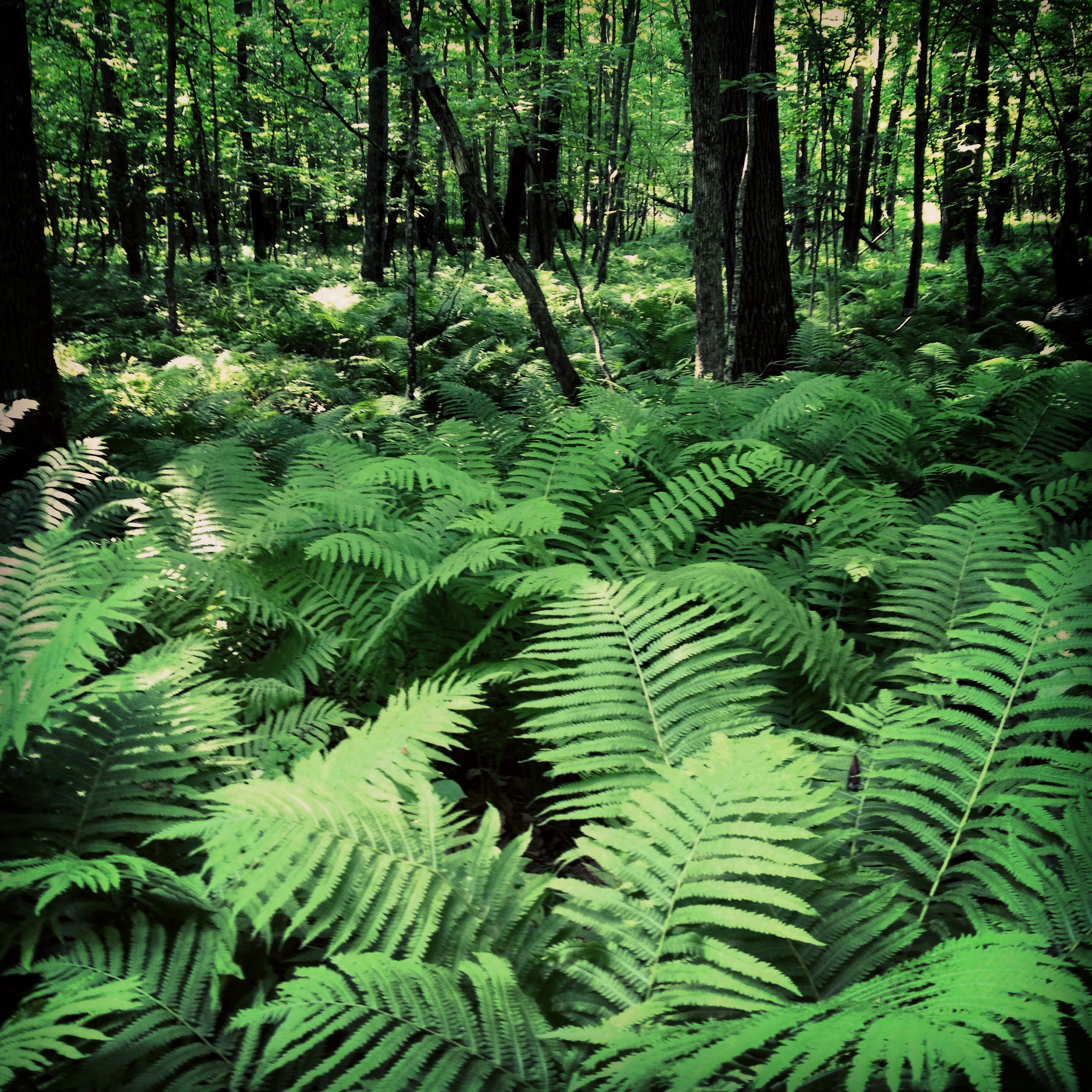The Minnesota Wind Turbines sprouting up in the distance.
The Drive: The first half of this drive is almost identical to the drive from Minneapolis to Mankato (Minneopa). The town of St. James could be St. Peter's twin and Windom is their awkward older brother. I also passed through the poorly named Mountain Lake, a Mennonite community in one of the driest and flattest areas of the state. Between Windom and Split Rock Creek, the featureless prairie gave way to a forest of wind turbines along Buffalo Ridge continuing almost to the South Dakota border. It is the idyllic country scene for a new age - rolling fields of golden corn and ripe soybeans, red barns and silos situated in the folds of the hills, herds of spotted cows grazing endless pasture, giant silver wind turbines glinting in the late afternoon sun. Something like this. Once I got over how I thought the landscape should look, I was able to enjoy it for what it was.
Split Rock Creek. Not much there. This part of the state is really quite dry and I was there during the driest part of the year.
The Park: My memory from Split Rock Creek State Park will always be "the place where I locked my keys in the car in the middle of nowhere and had to be bailed out by AAA." Just miles from the South Dakota border, this was the first true prairie park I hiked (Minneopa was more savanna). The small park is next to a rare prairie lake (although it's technically a reservoir, not a lake) complete with a beach and fishing pier (where I spend a lot of time waiting for someone to come help me break into my own car). There is a campground in a wooded section of the park, but I'm not sure why you would stay there except that it isn't really close enough to a major town make it convenient for day trips.
The Old CCC Water Tower at Split Rock Creek State Park
The Trail: The 2.6 mile trail starts at the beach and follows the shore of the lake until you hit the Split Rock Creek dam. It then wraps around through the prairie grass, rising up to an old CCC water tower (one of several in the state park system) before returning to the beach. But wait! You didn't find the password? That's because there is a second part of the trail that crosses the creek and (like usual) the password is at the very furthest point. The trail isn't anything special (especially compared to prairie trails at Glacial Lakes or Blue Mounds), but I gave this park a 4/5 because during the hours I waited for car help, I came to really like it. It has more of a relaxing city park feel than wilderness state park, but sometimes that's what you need.
Cumulative Miles Hiked: 28.8
Cumulative Miles Driven: 908
Arbitrary Rating: 4/5








